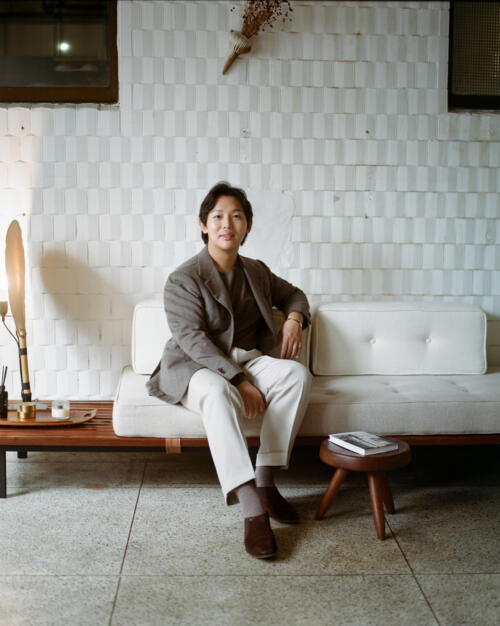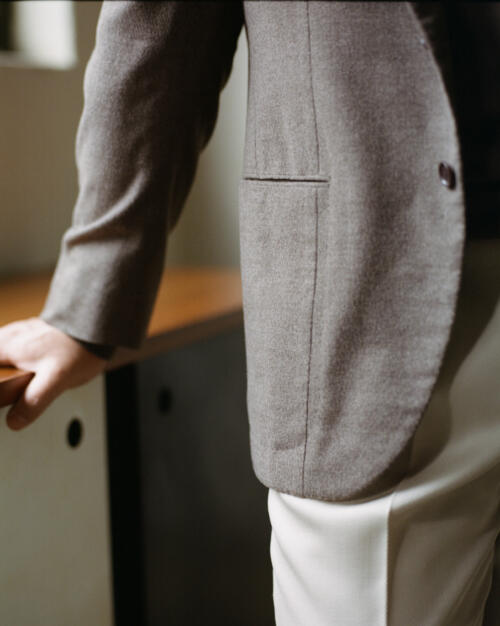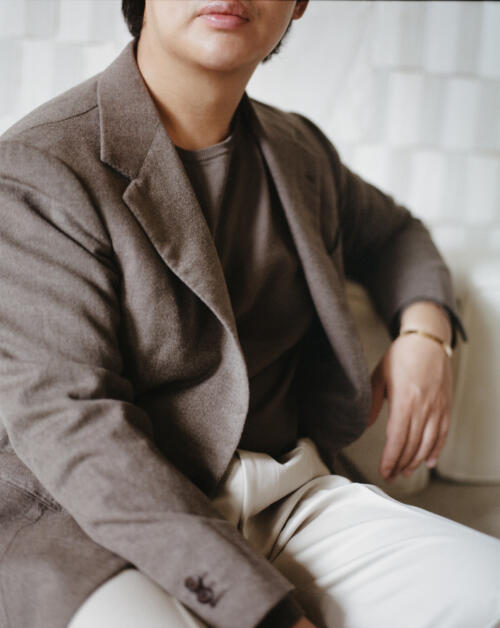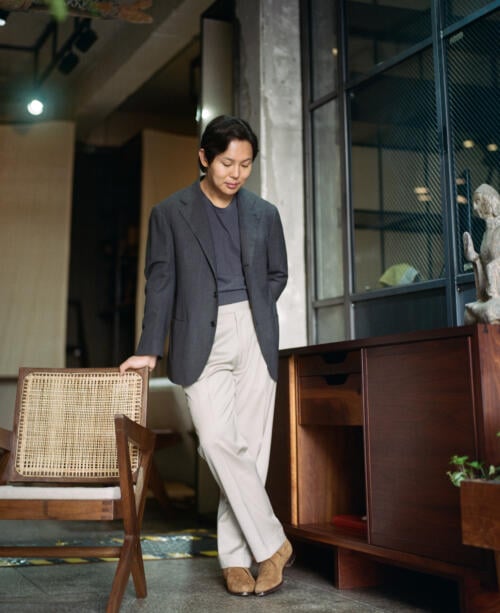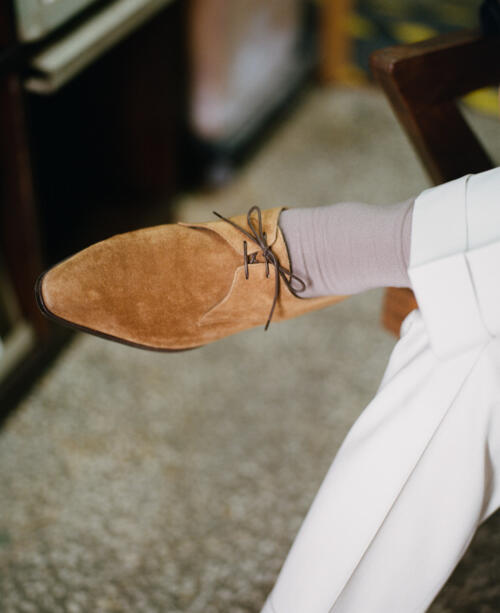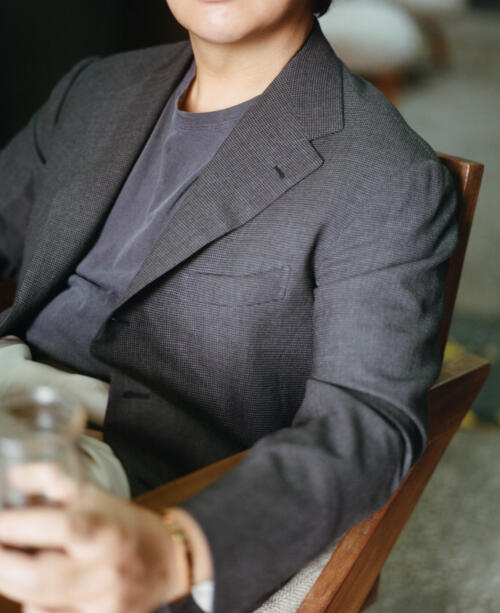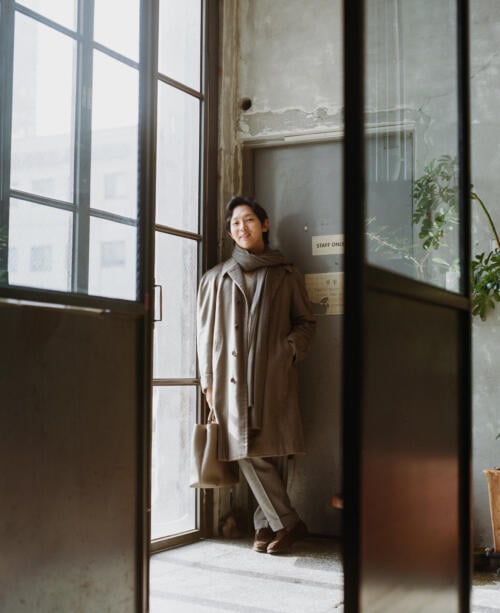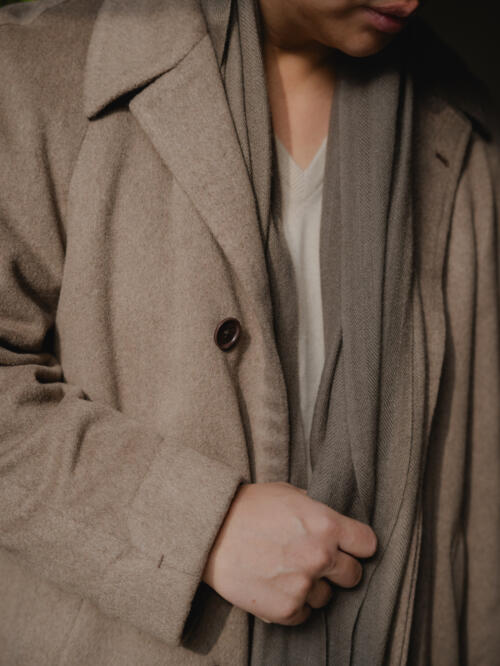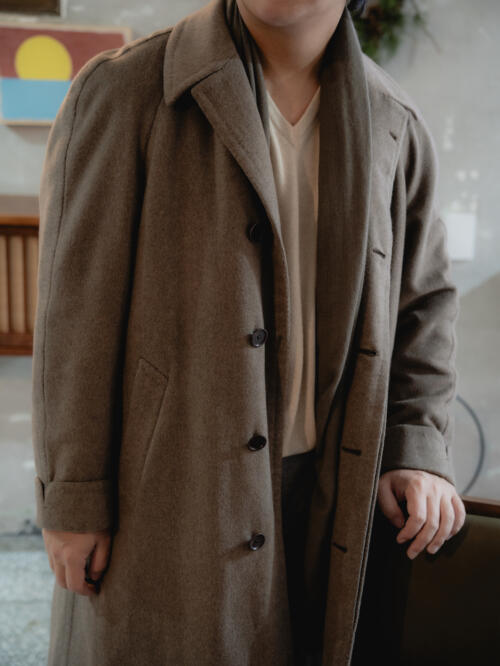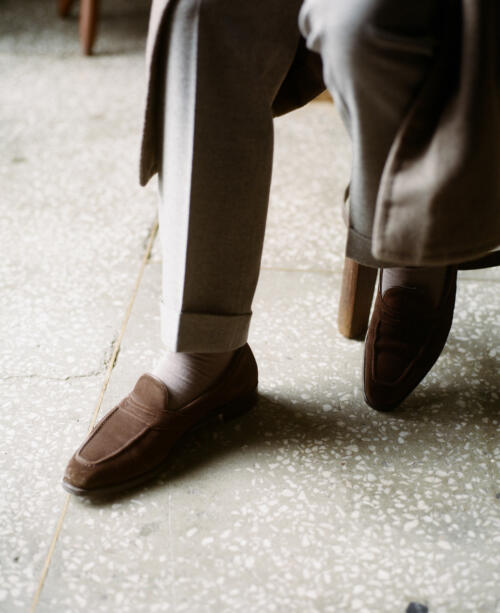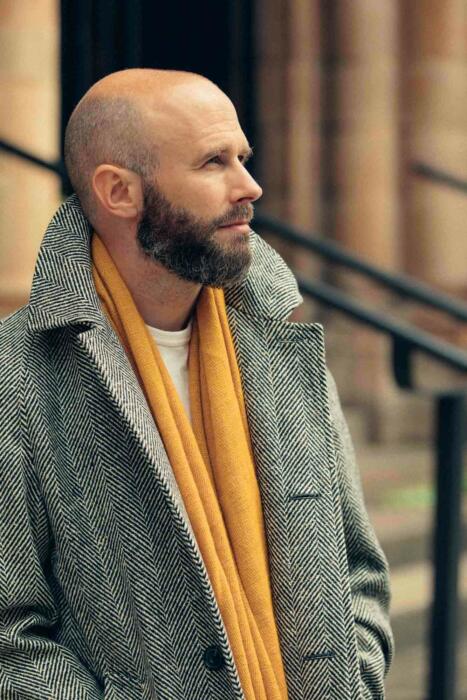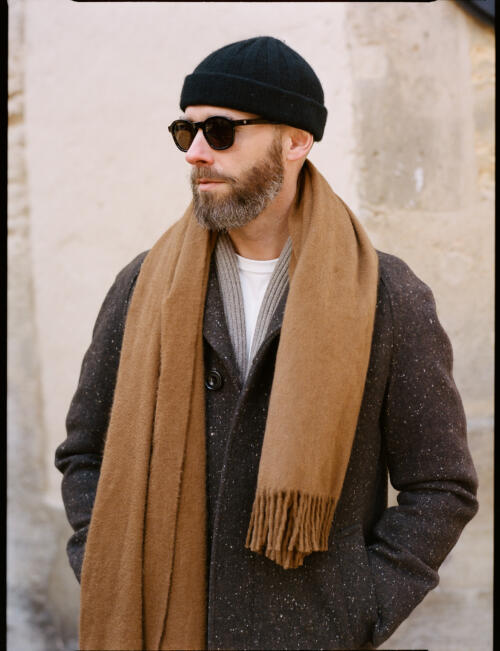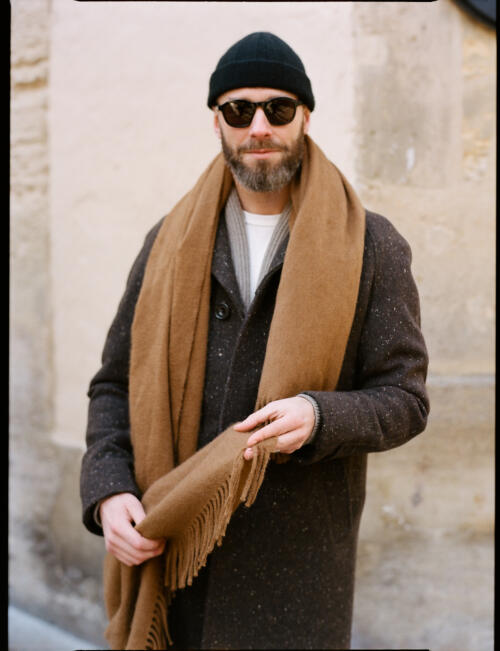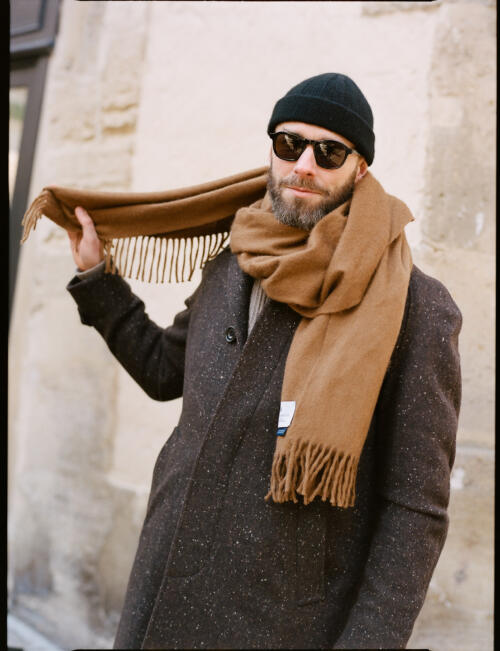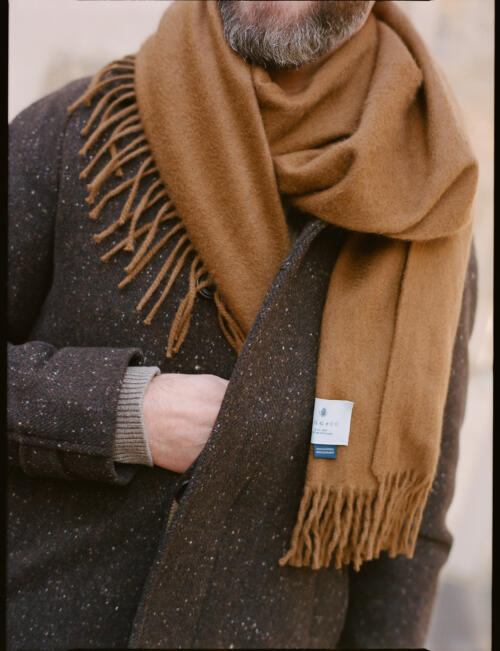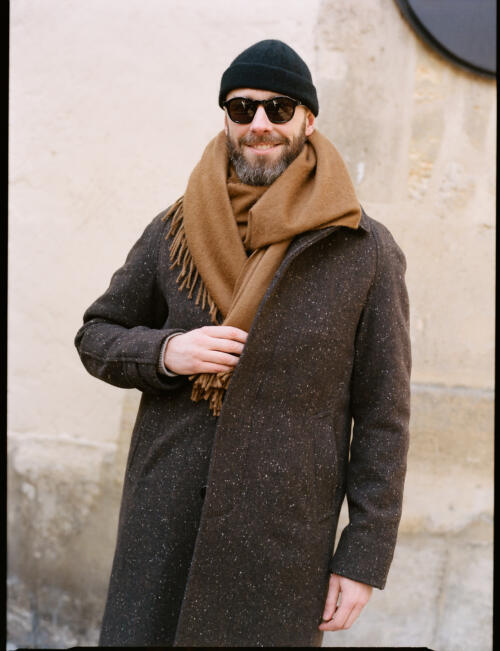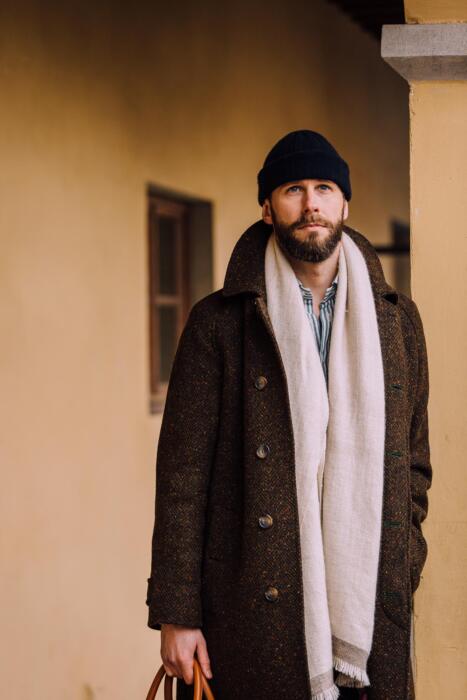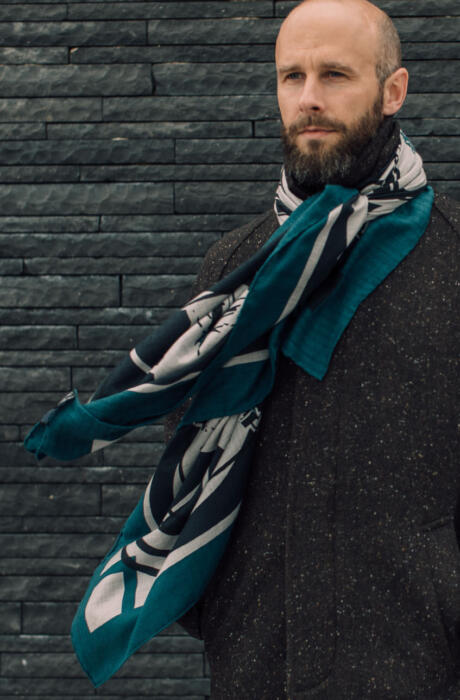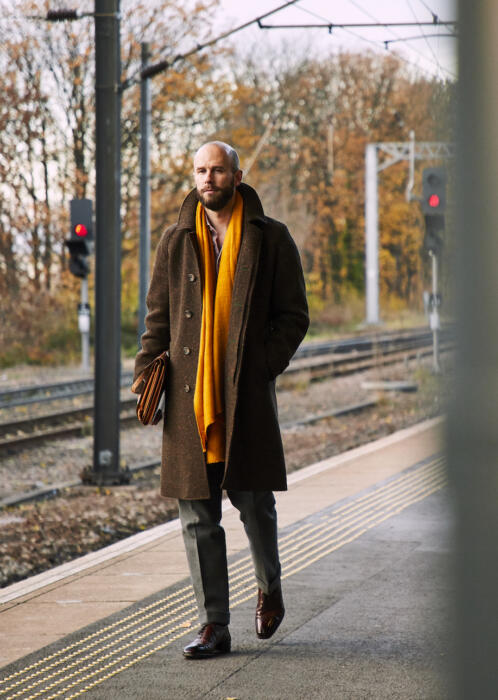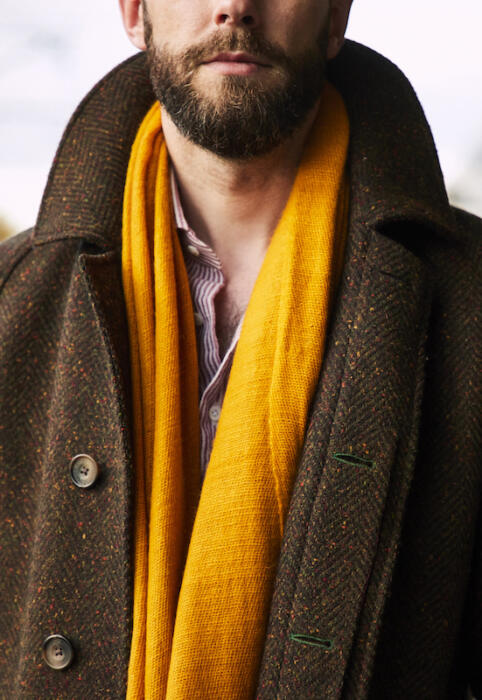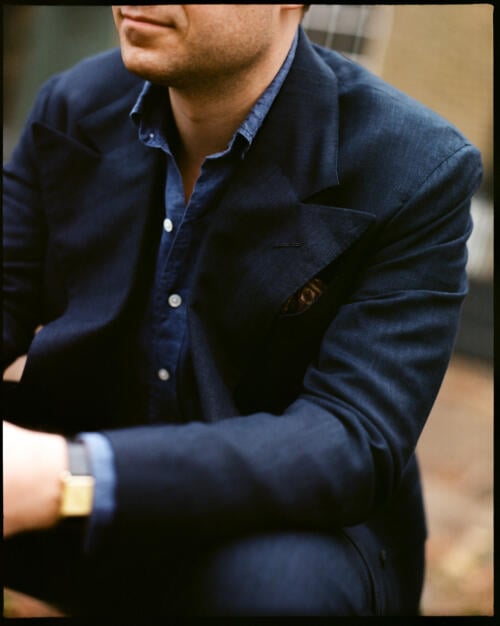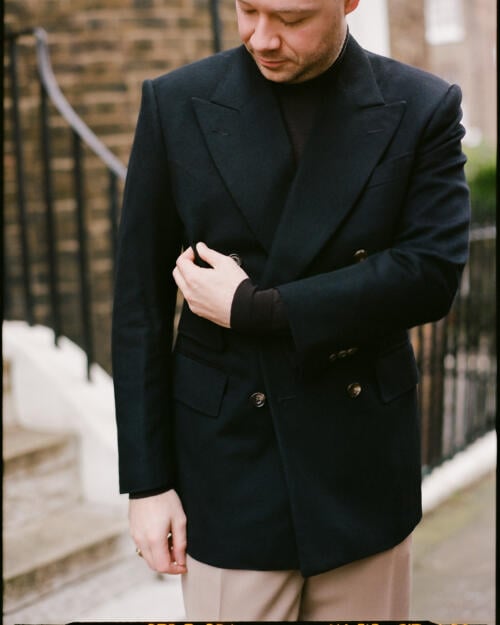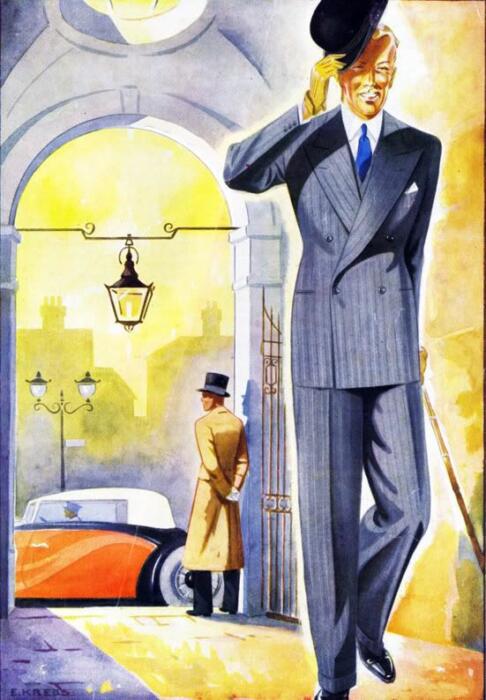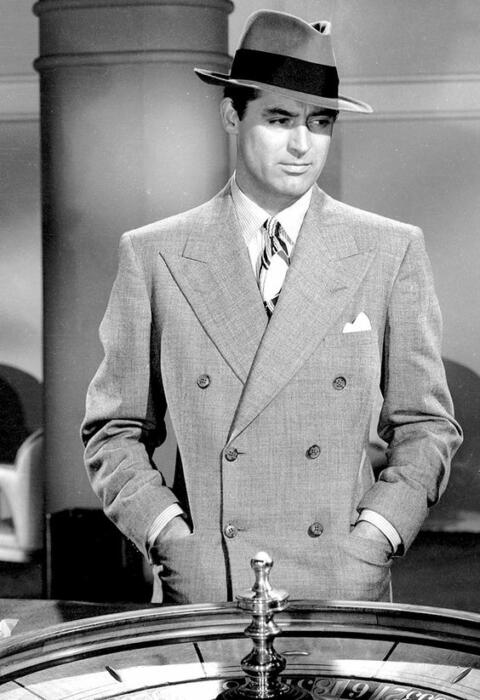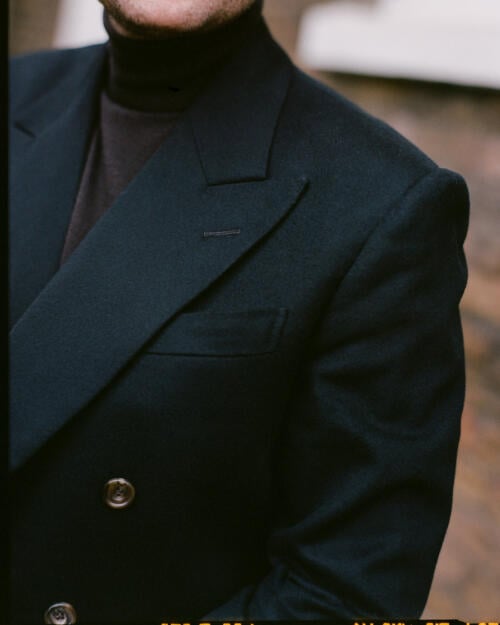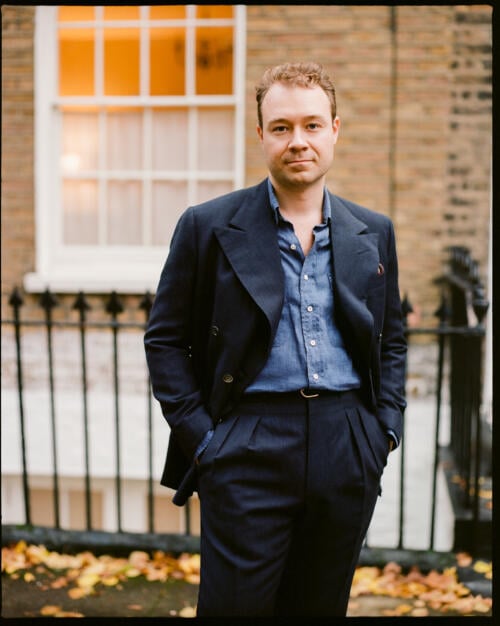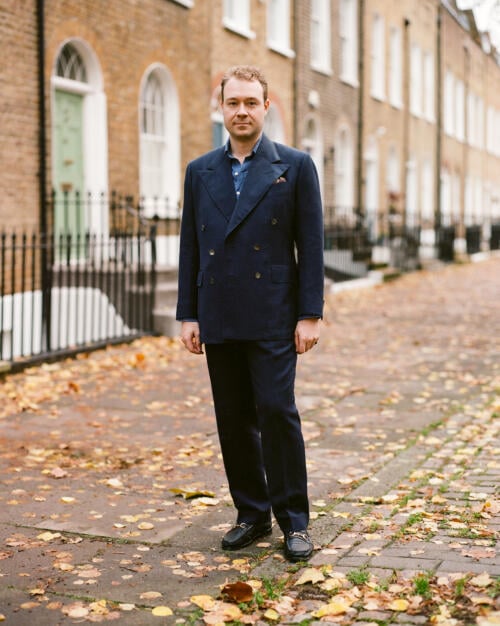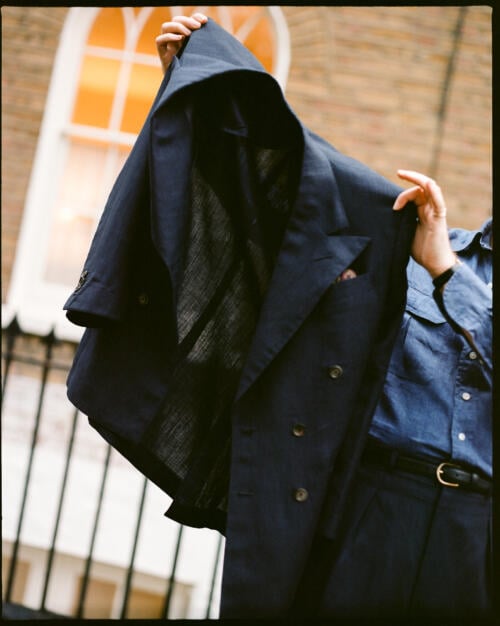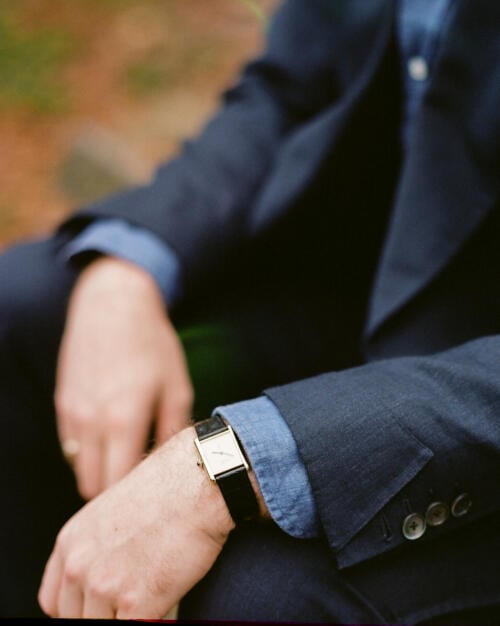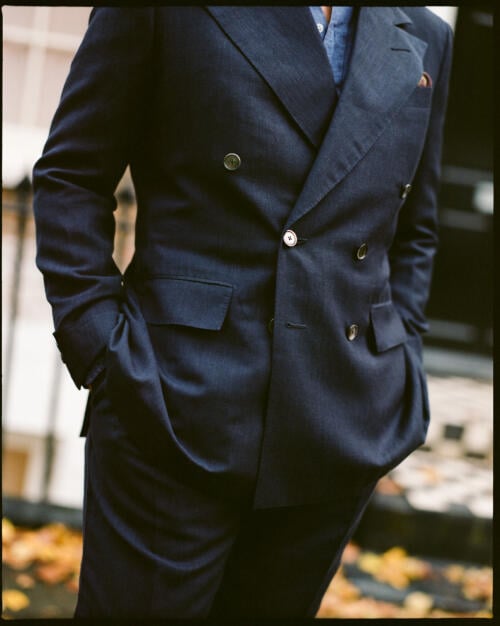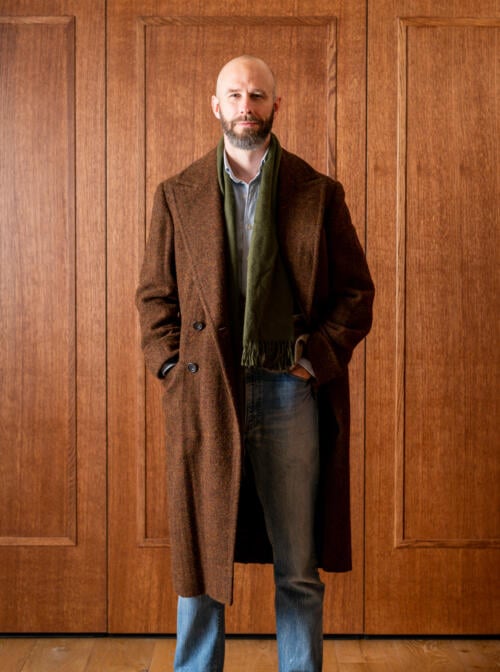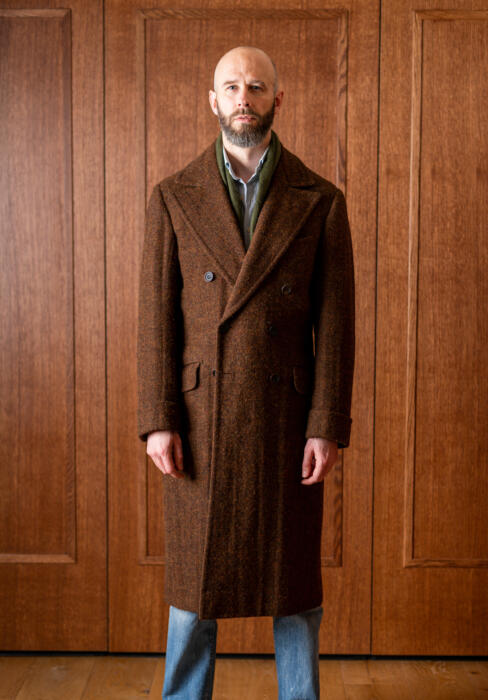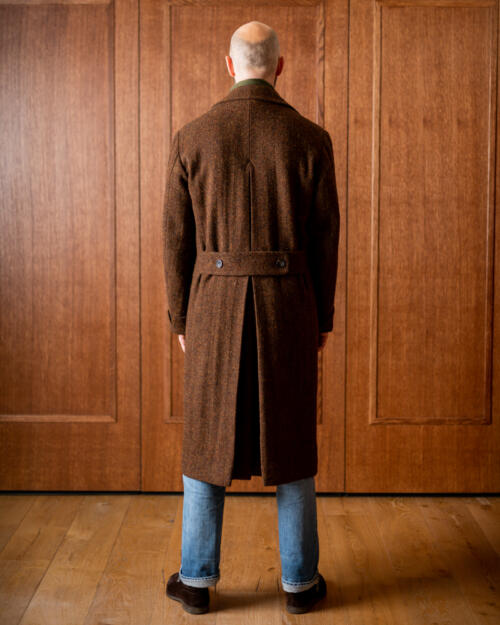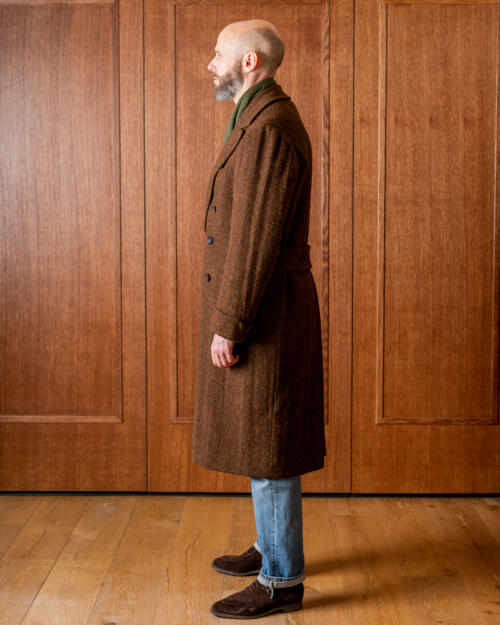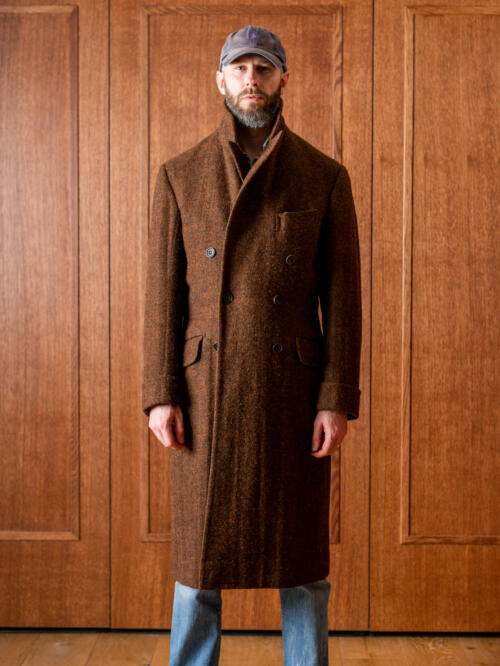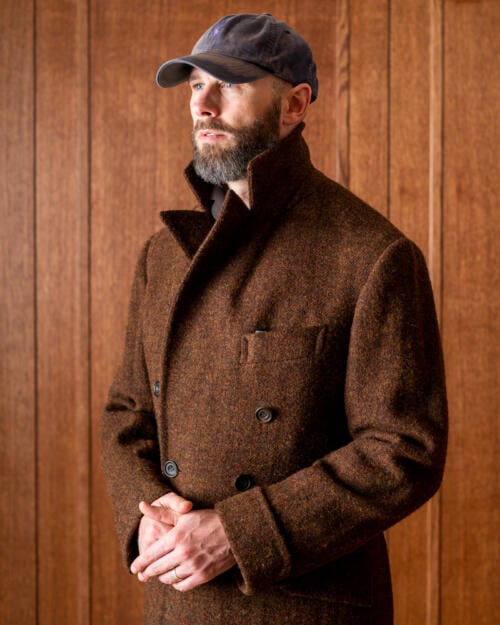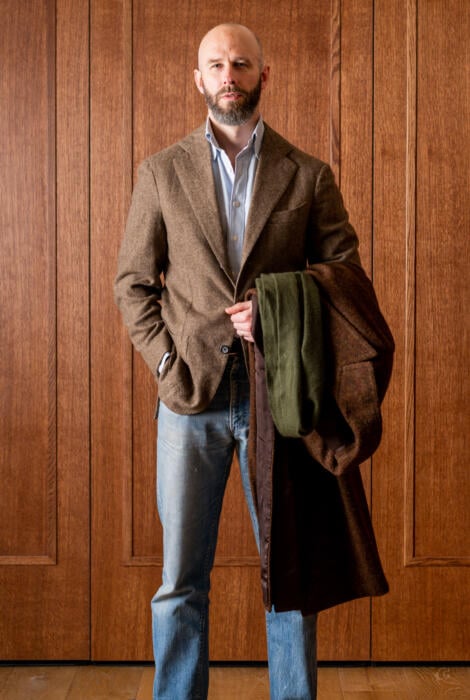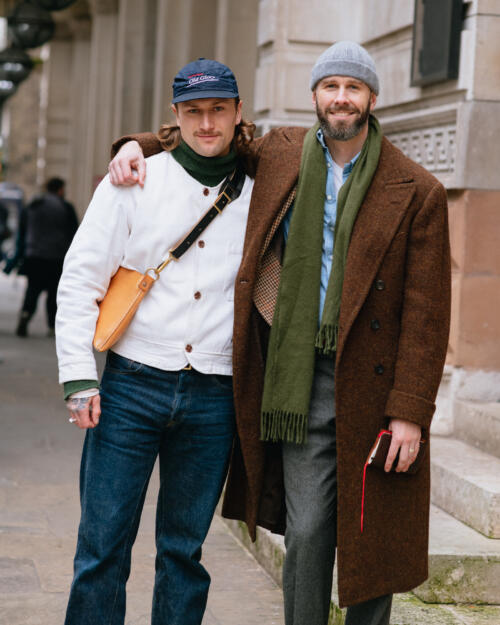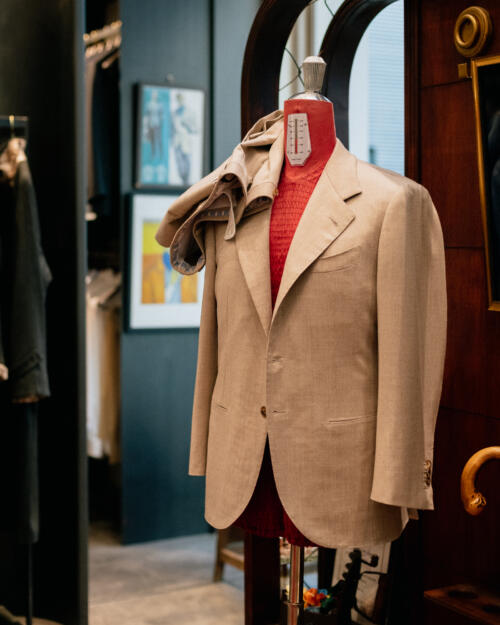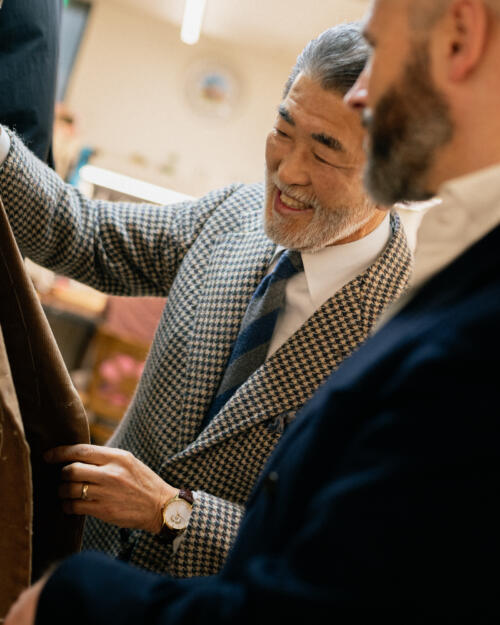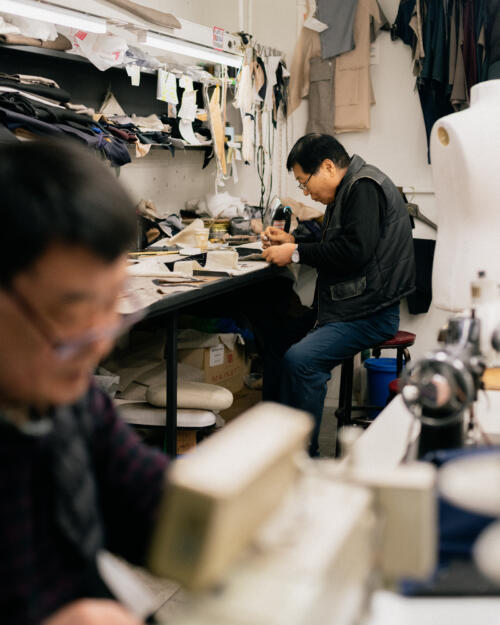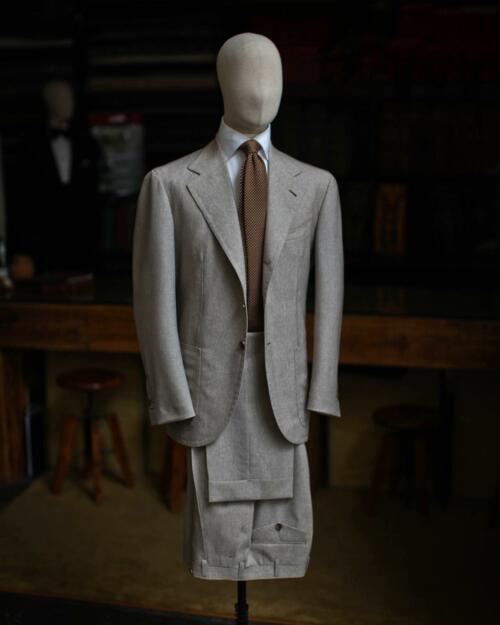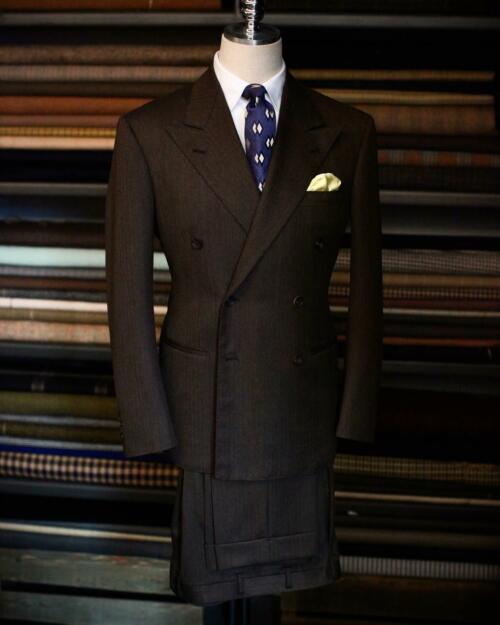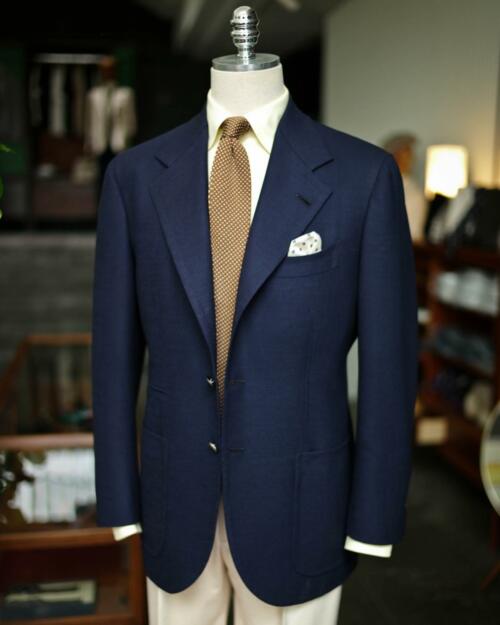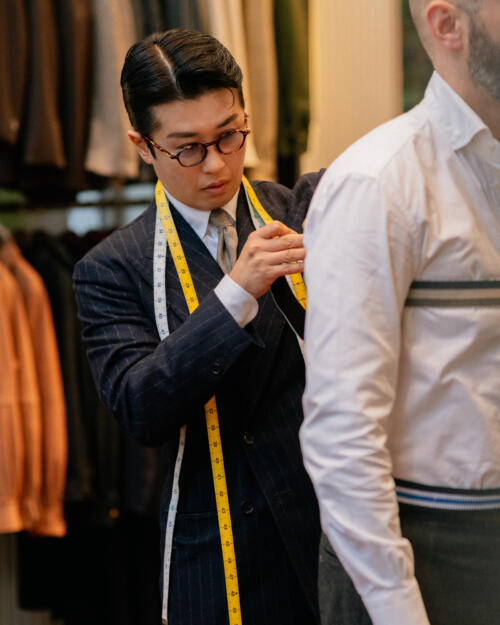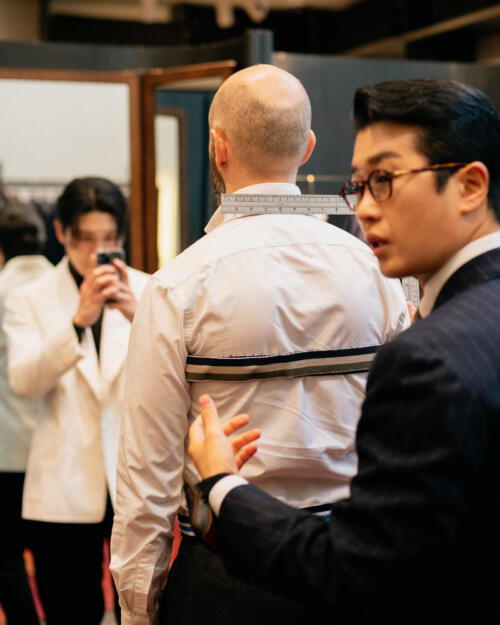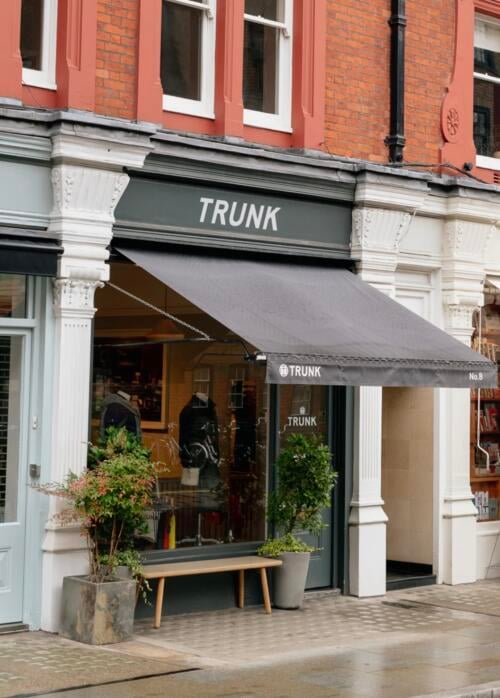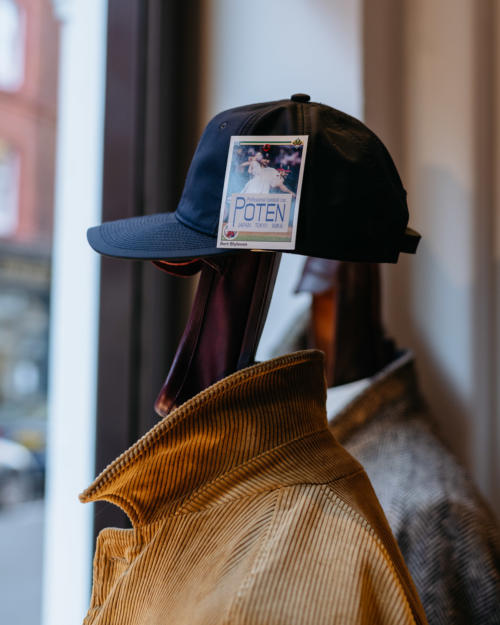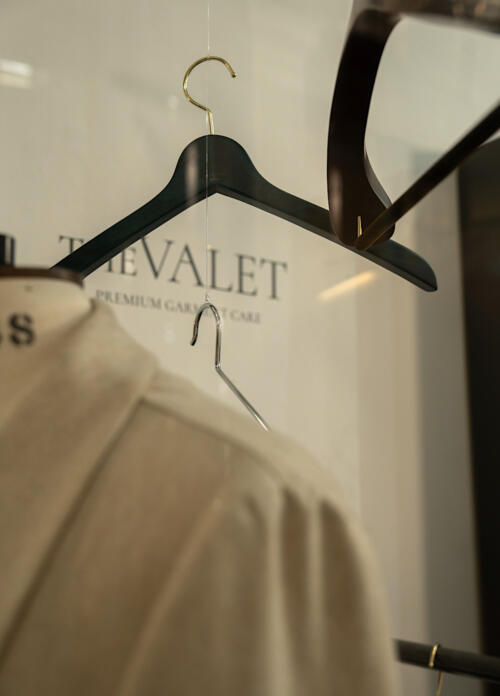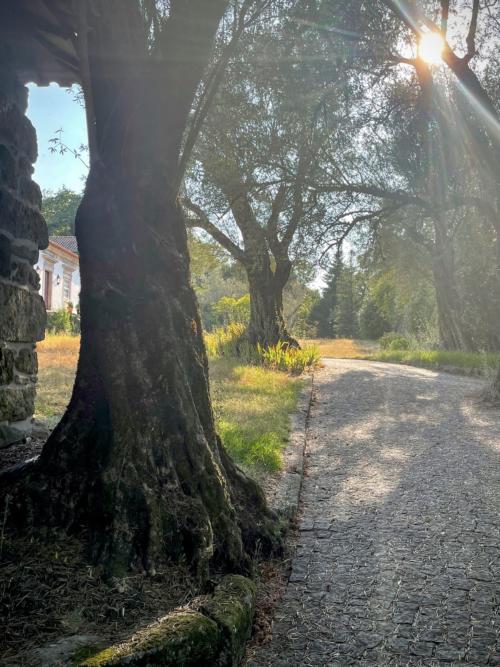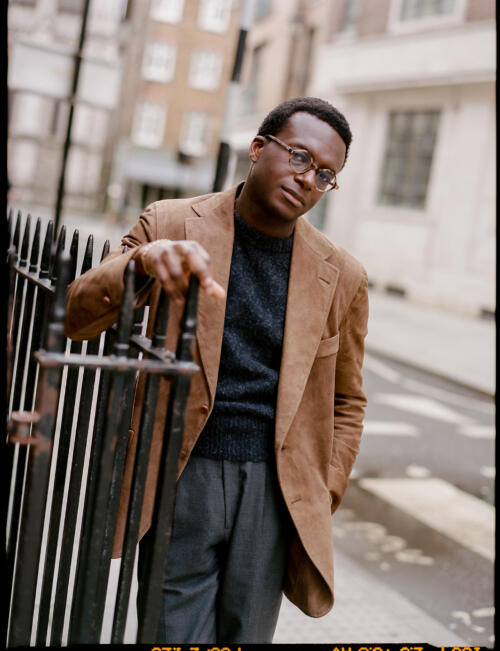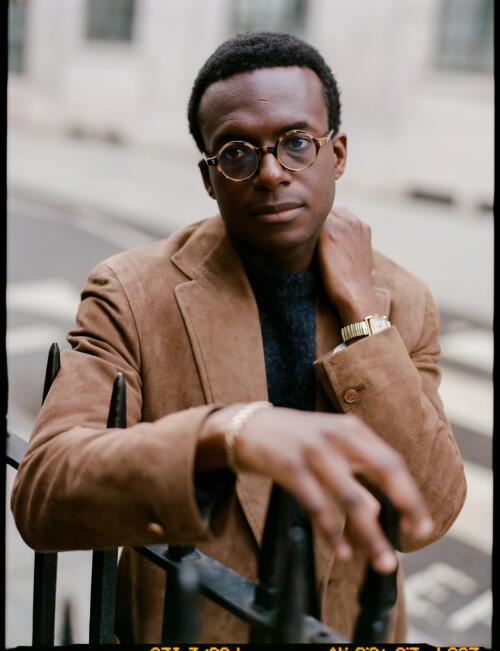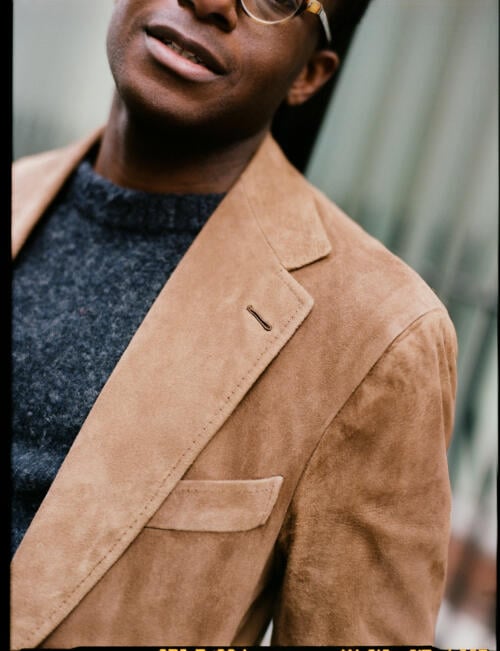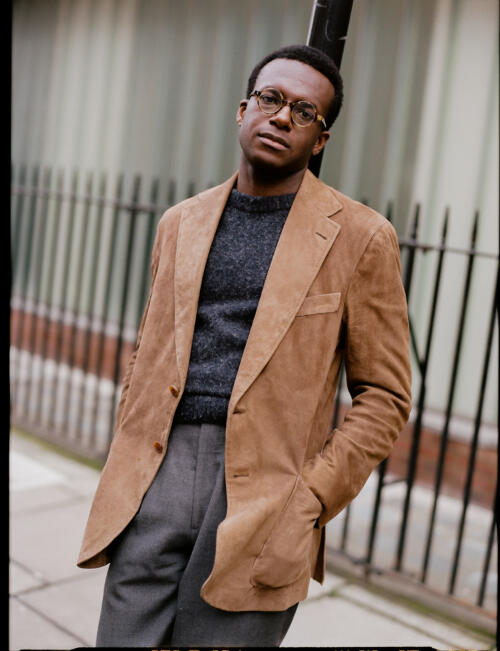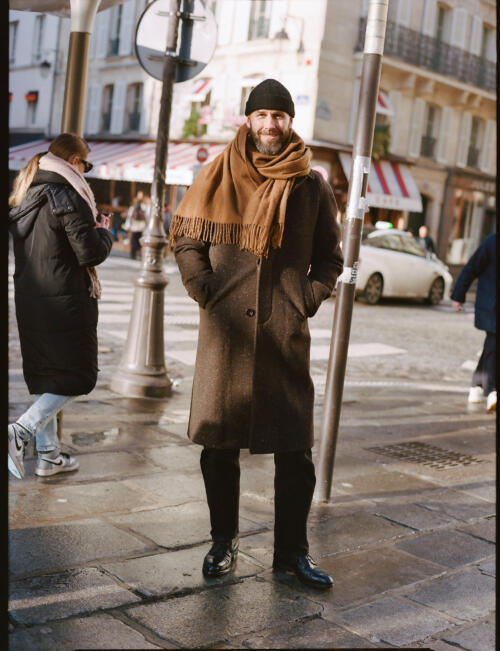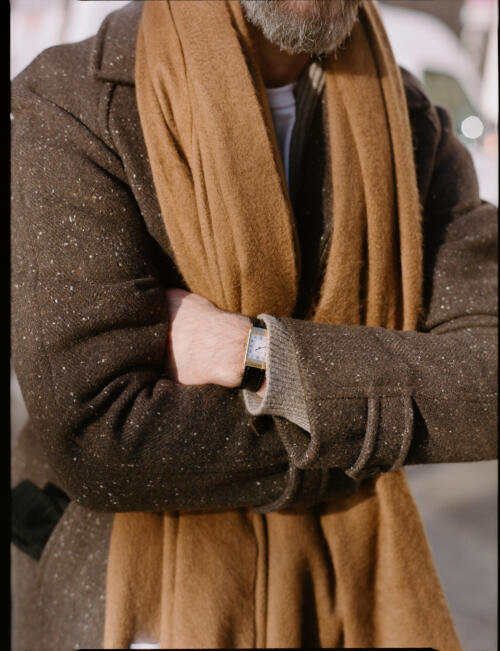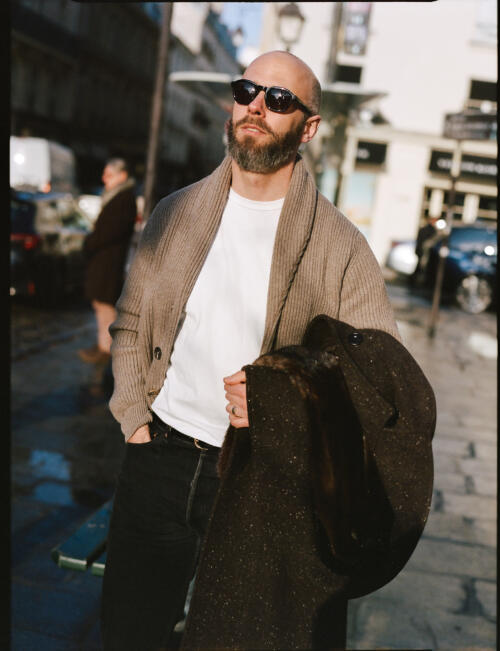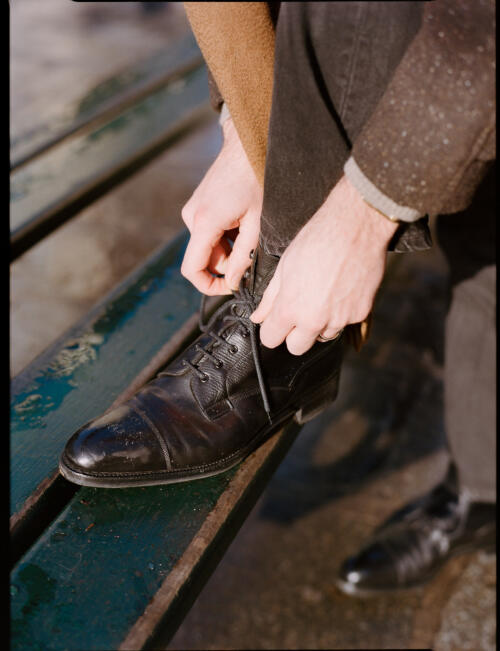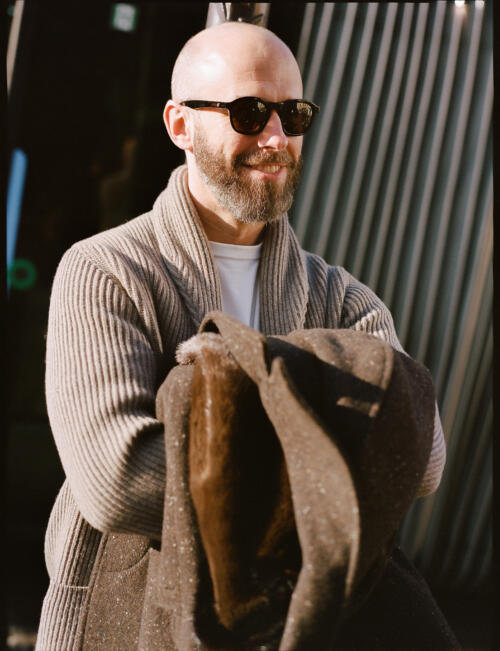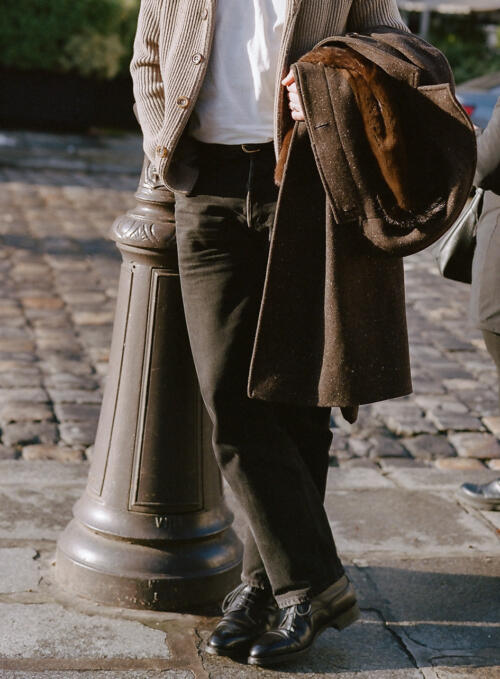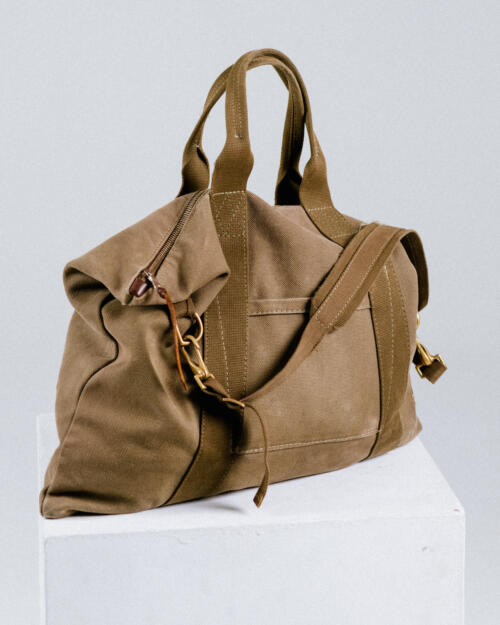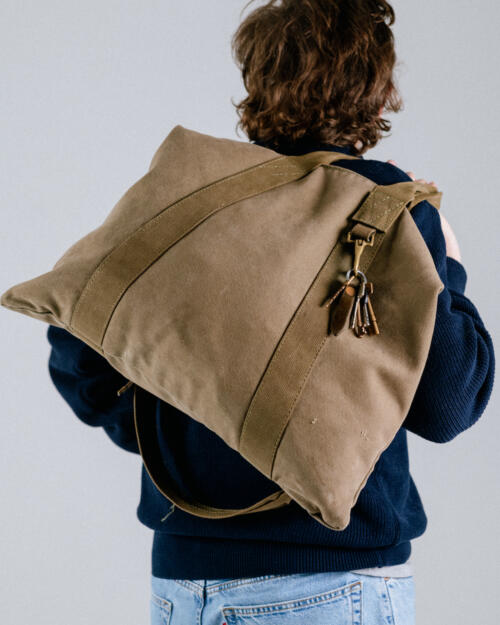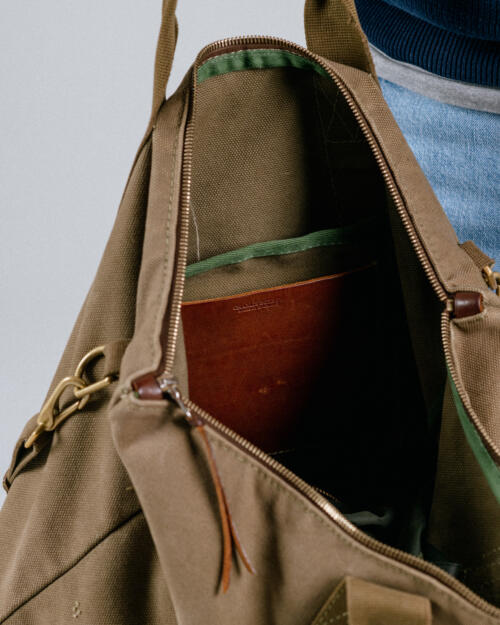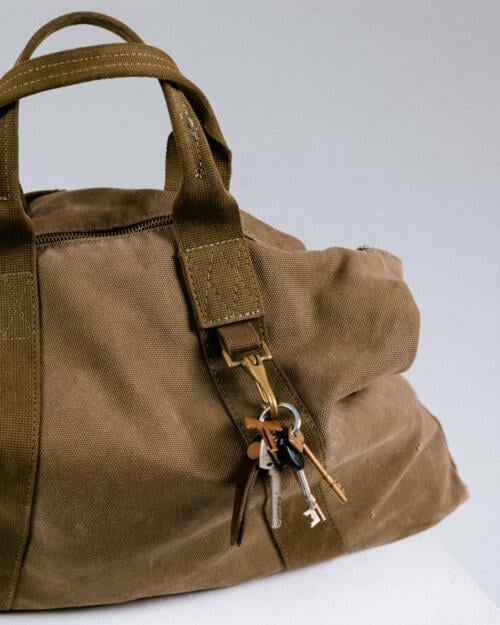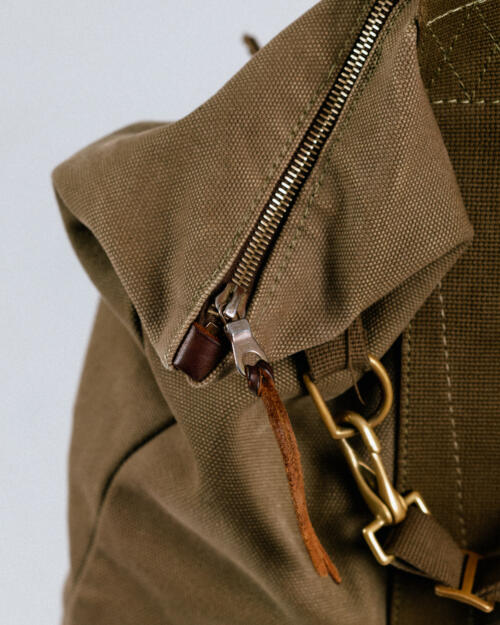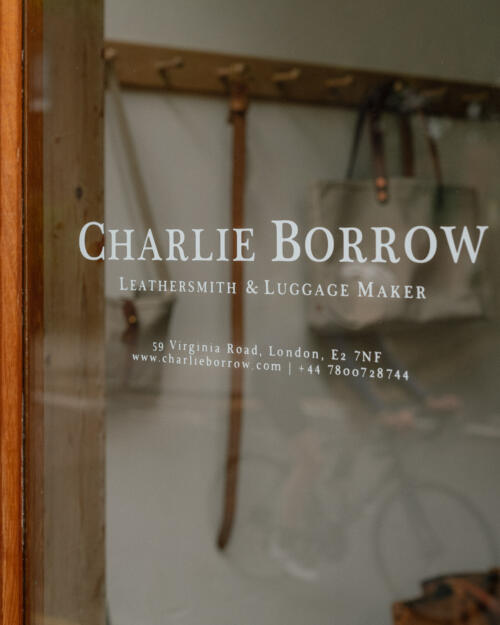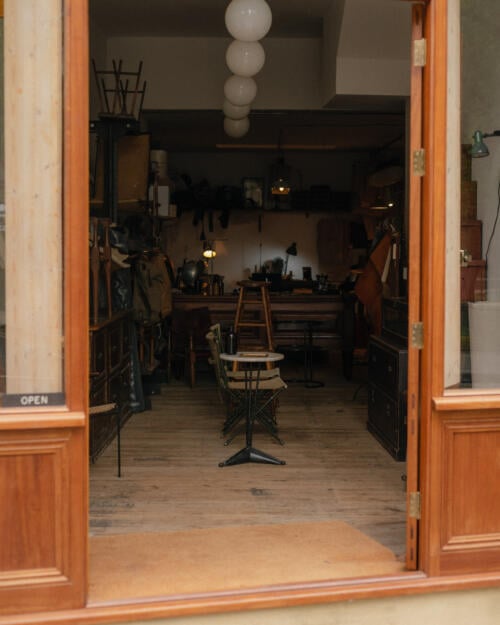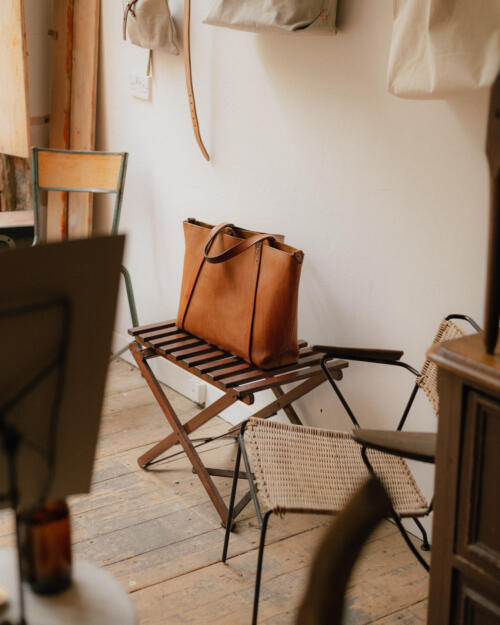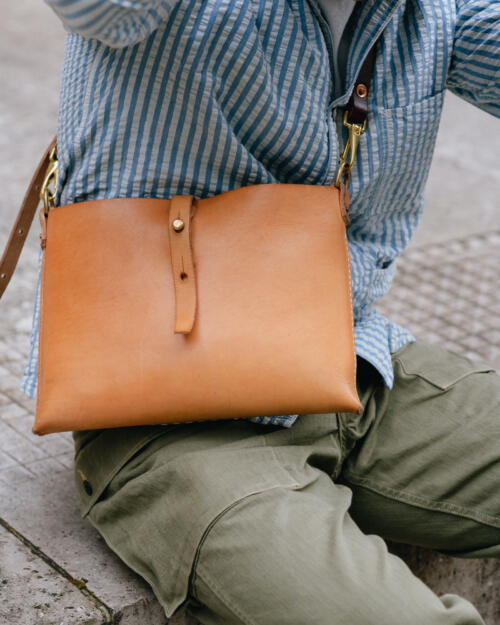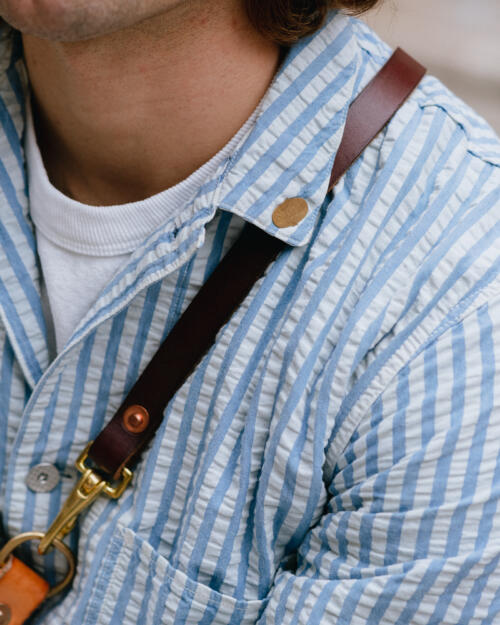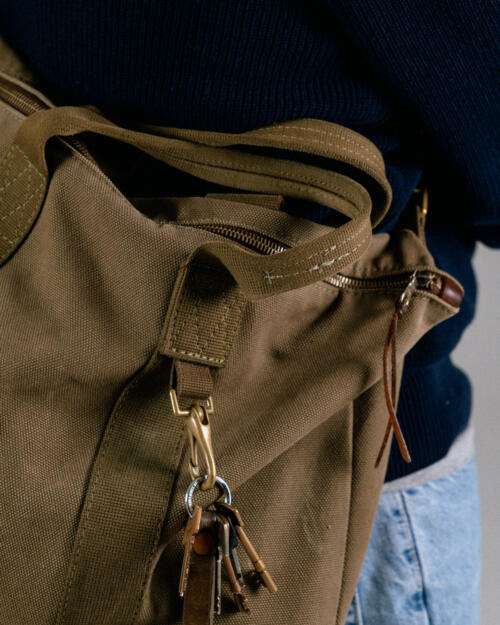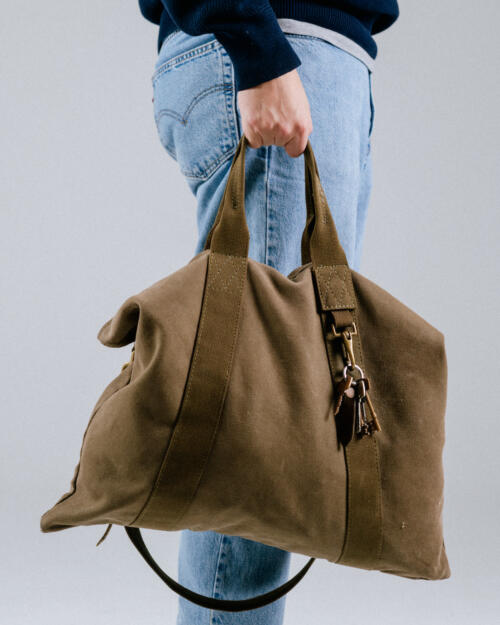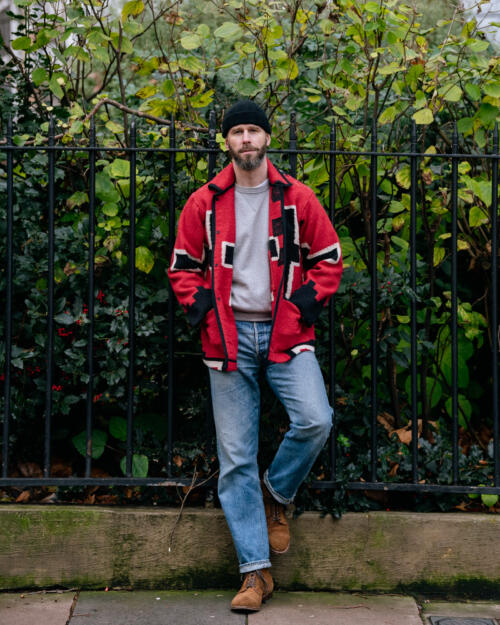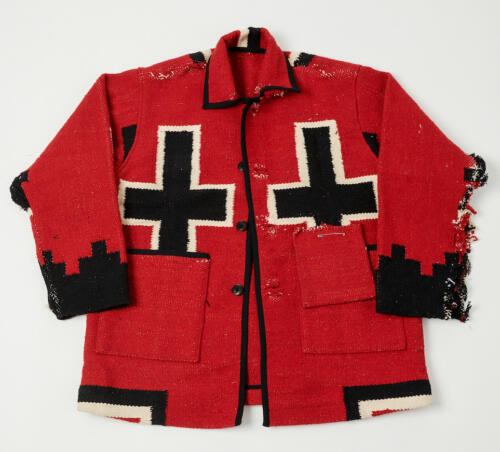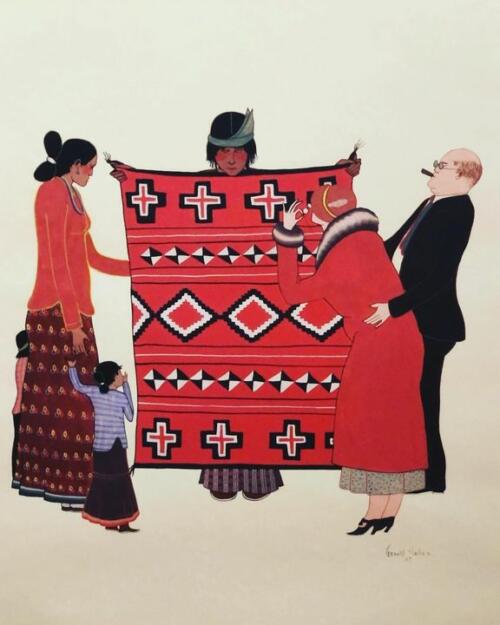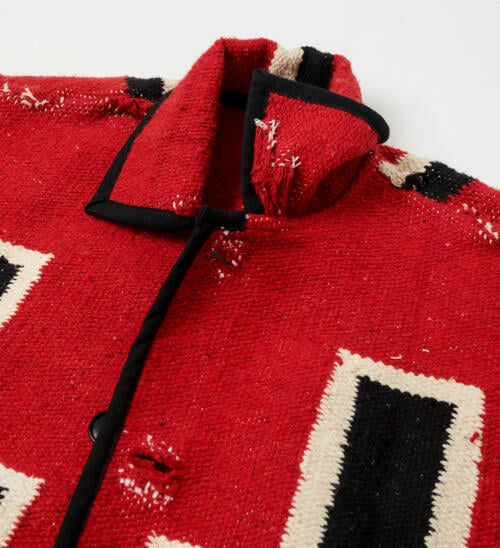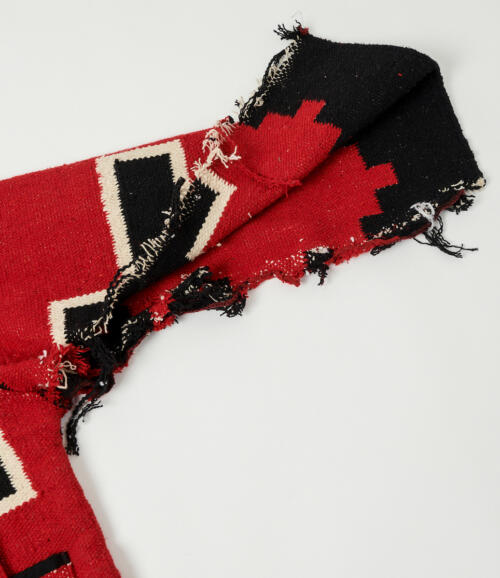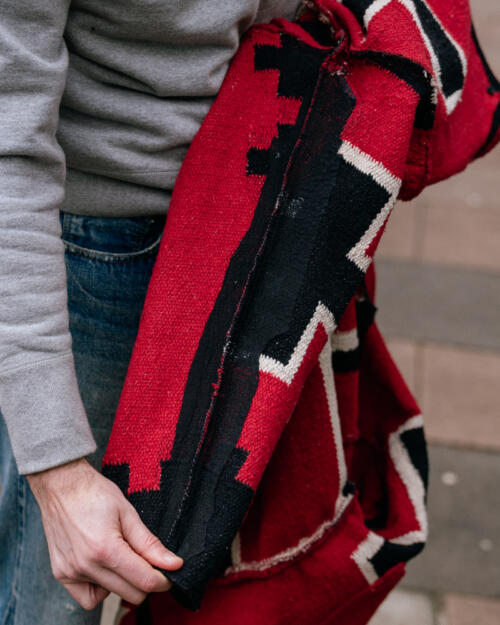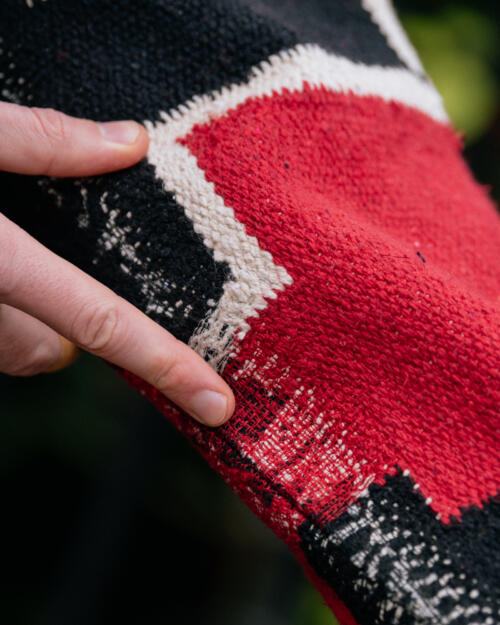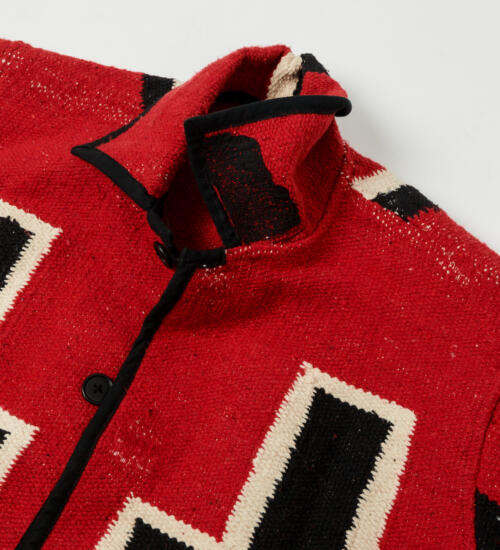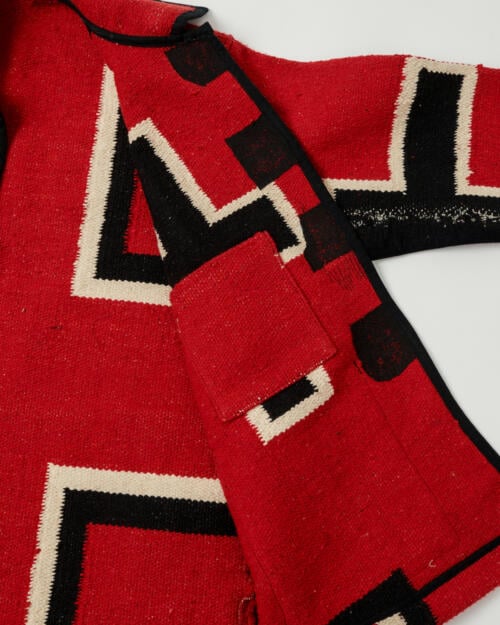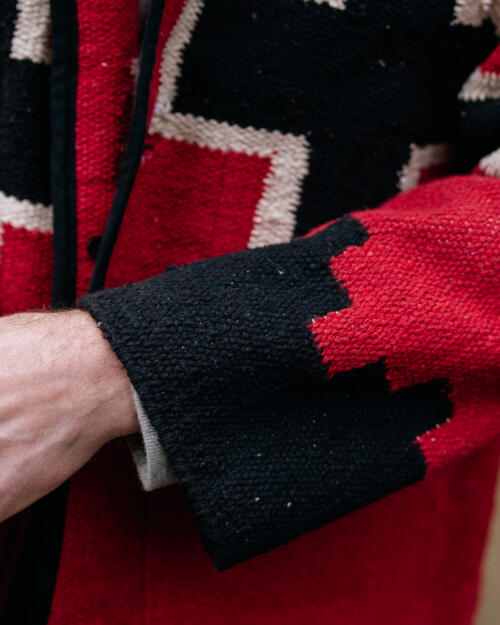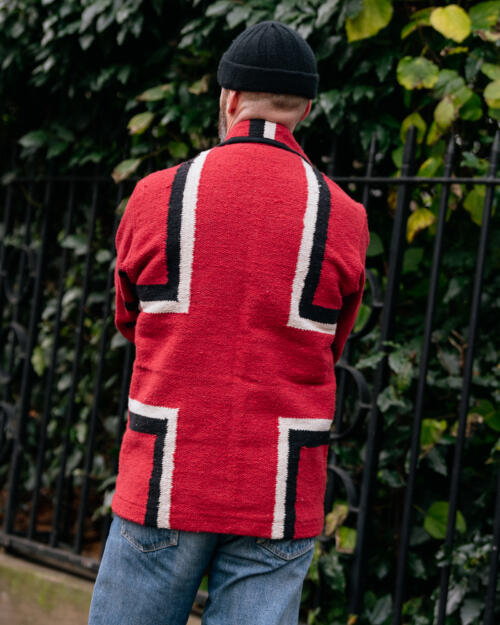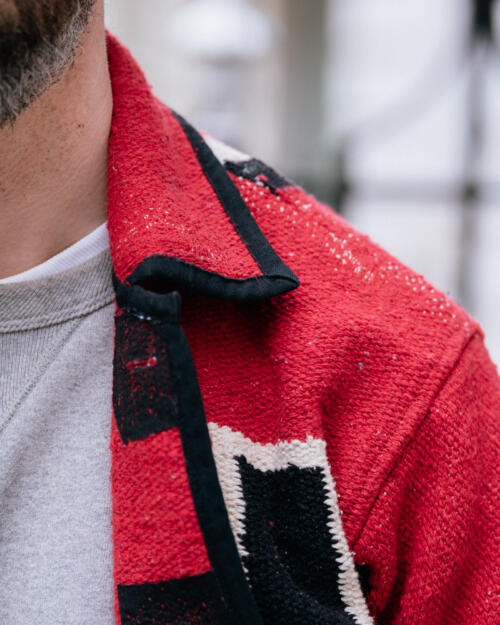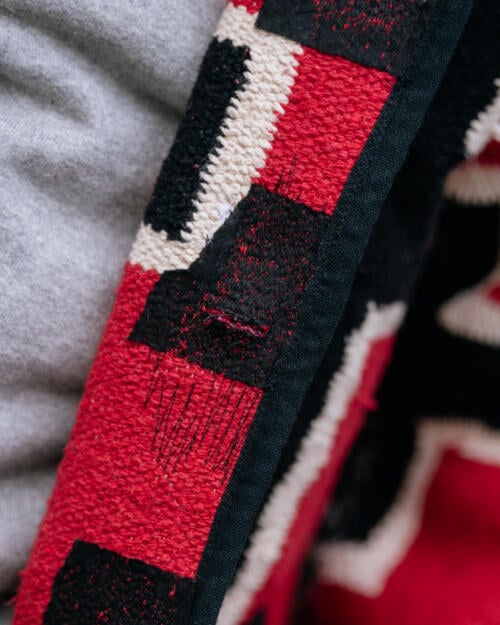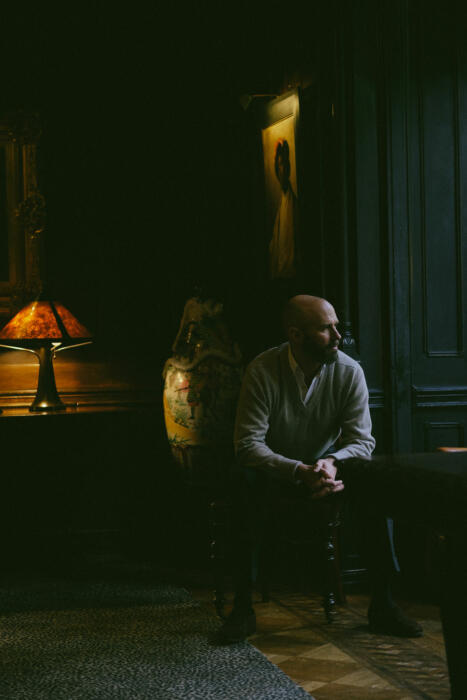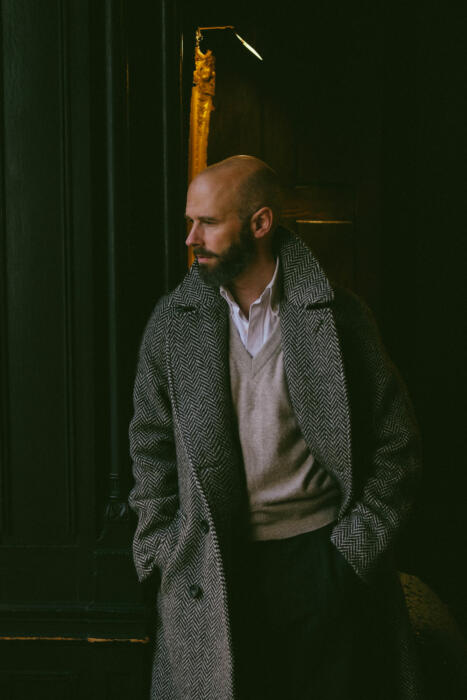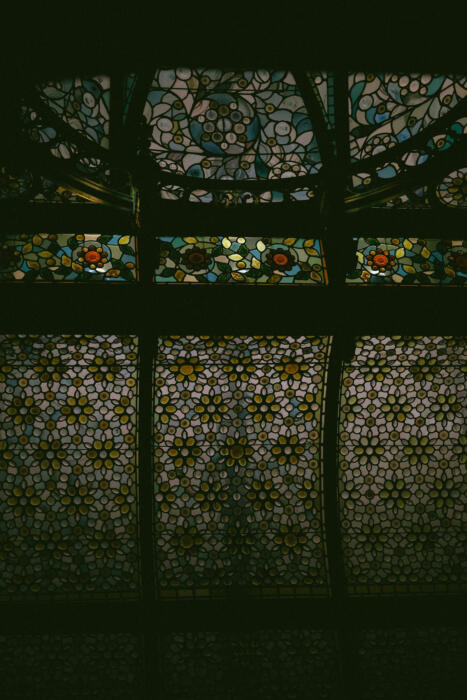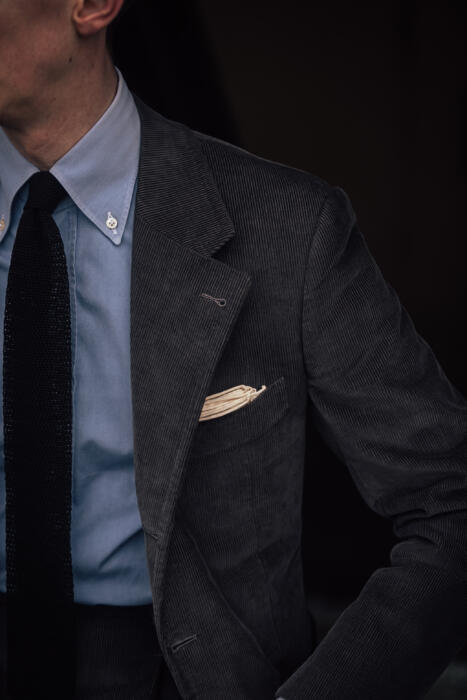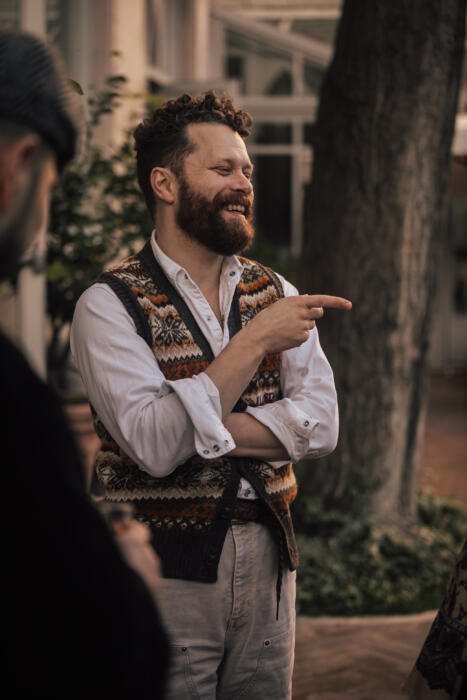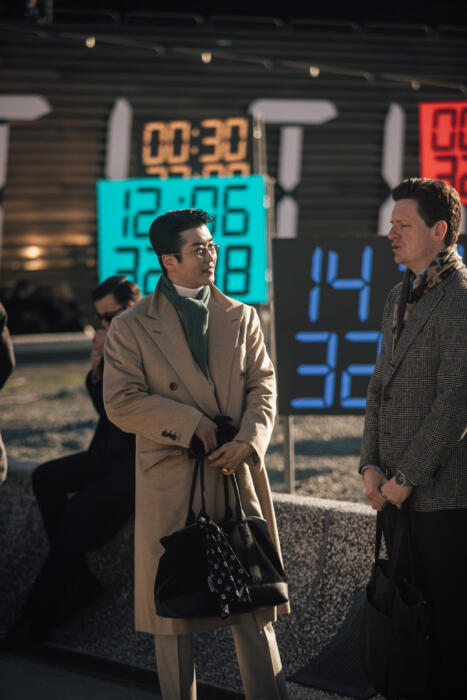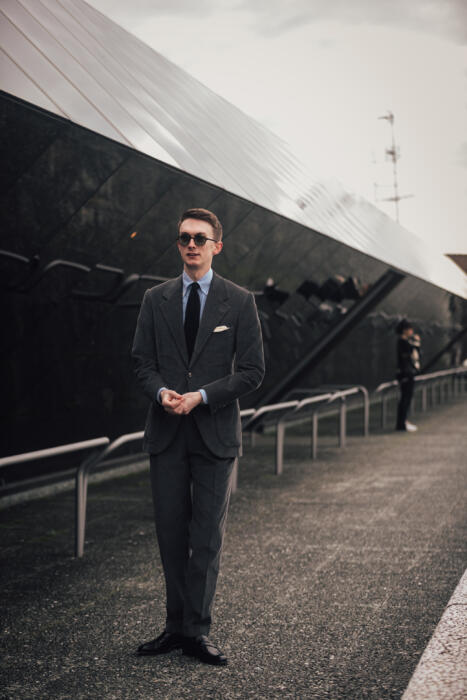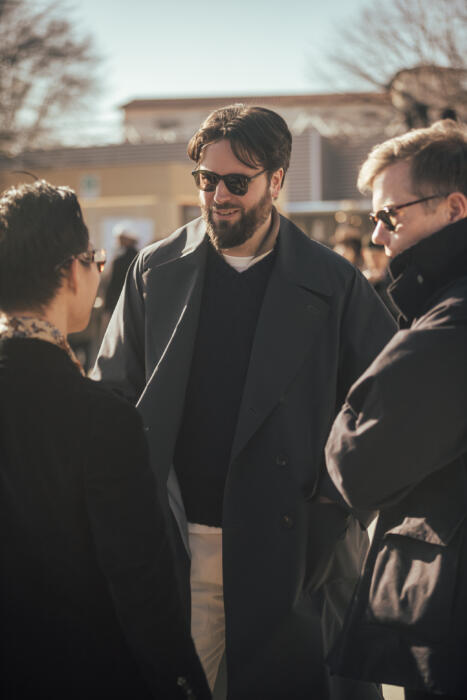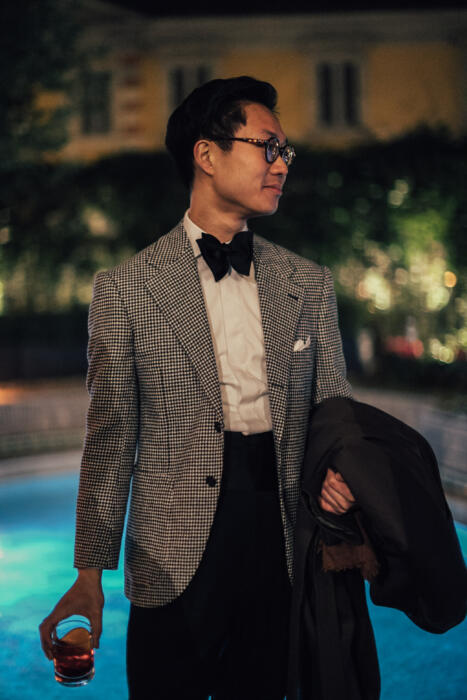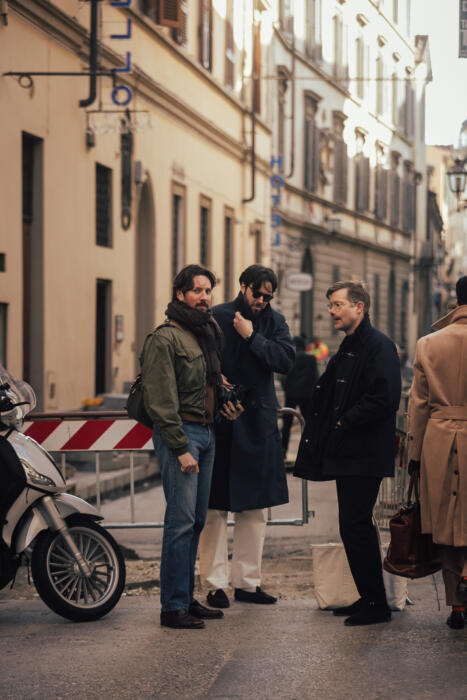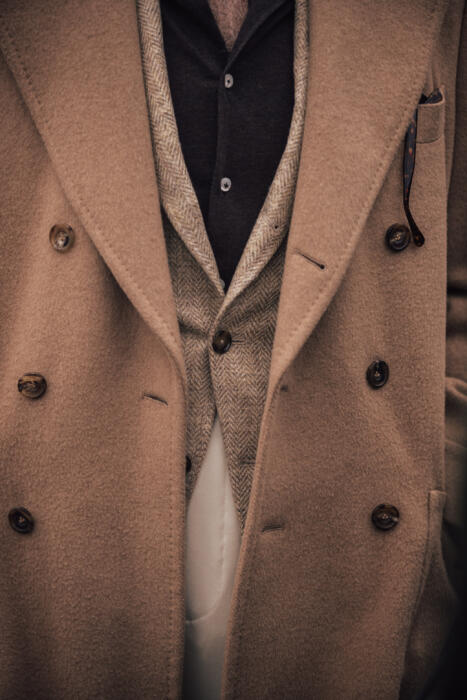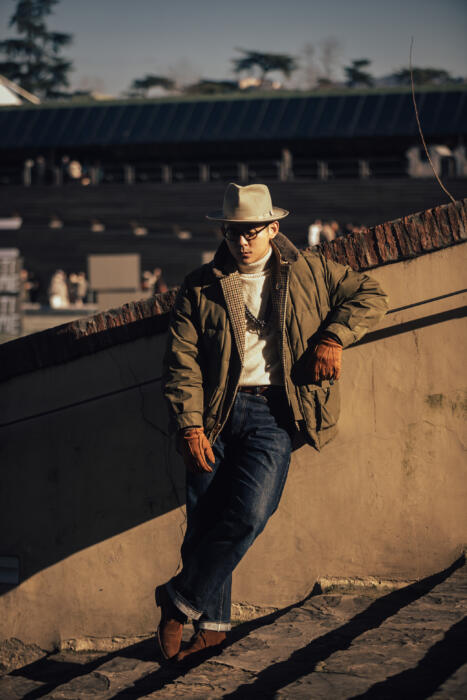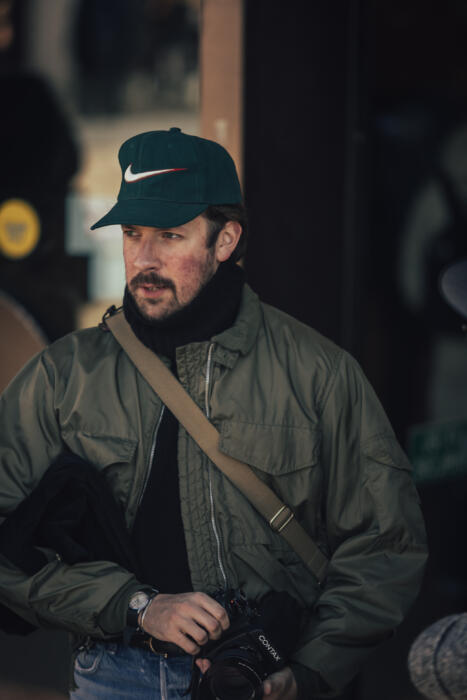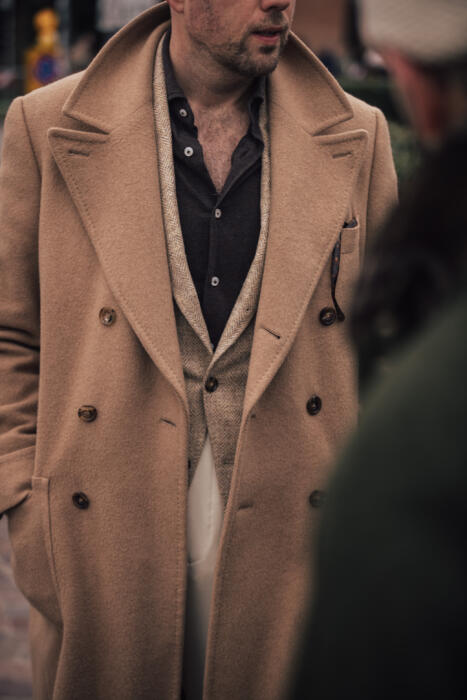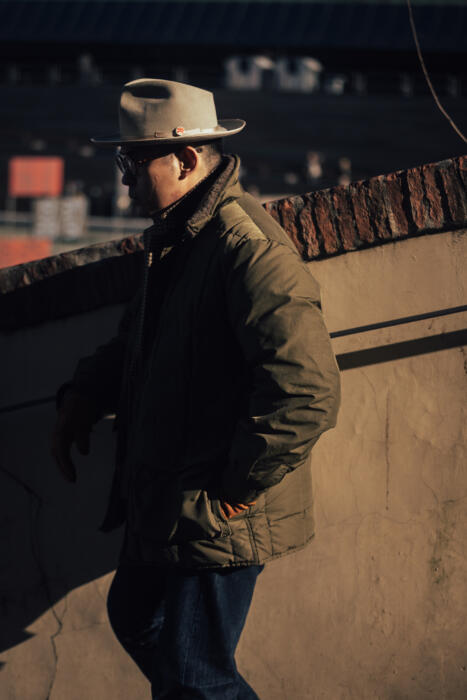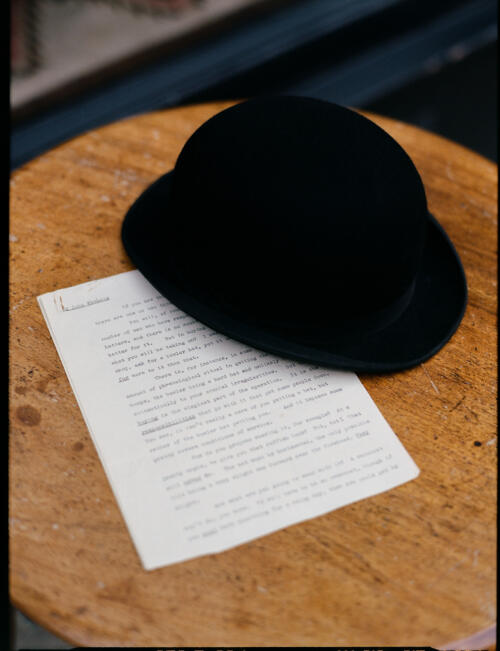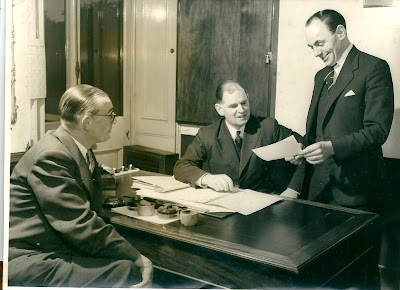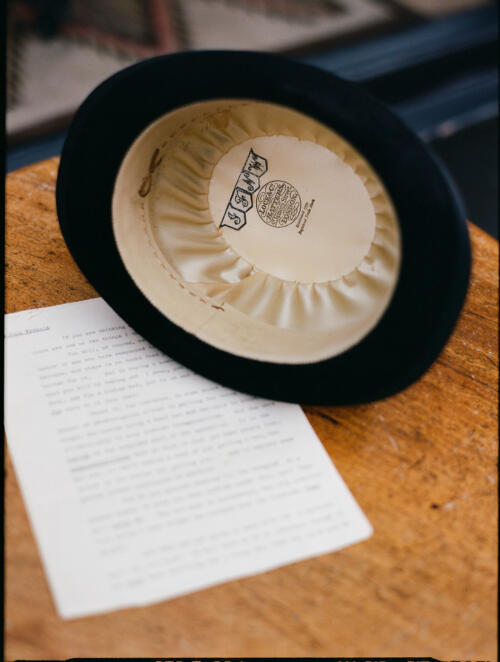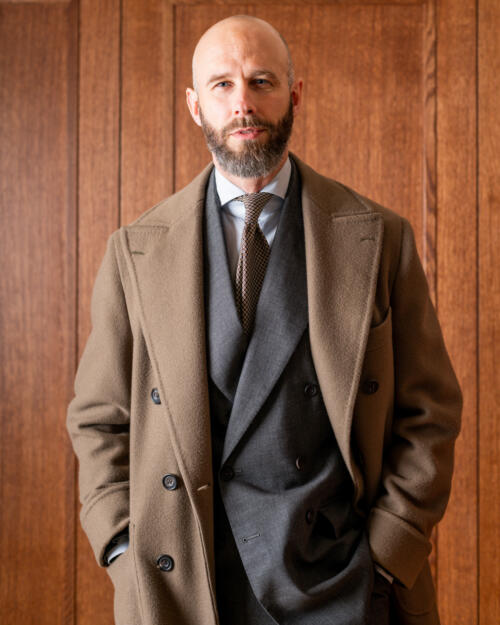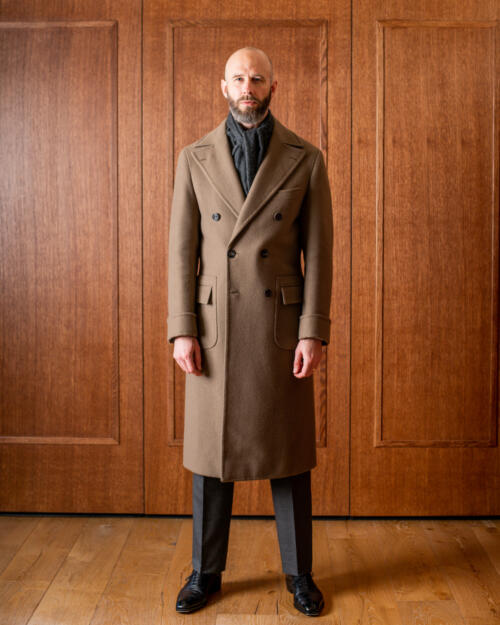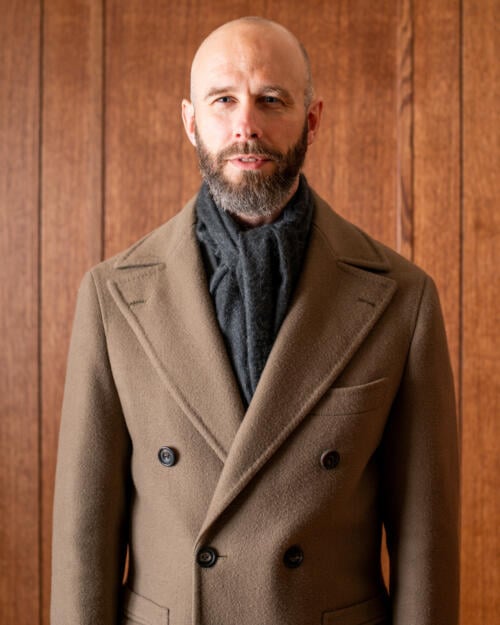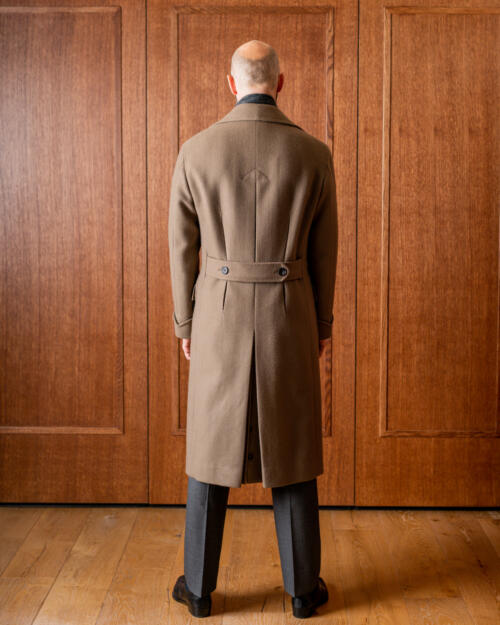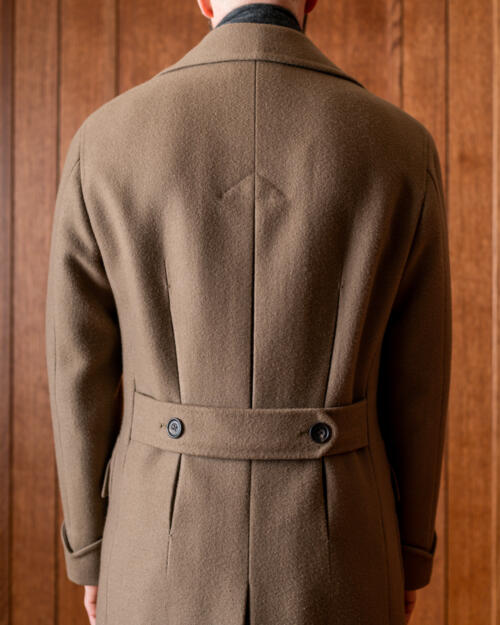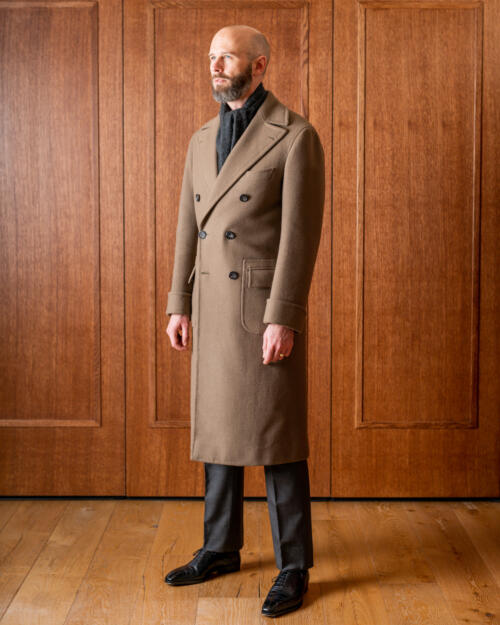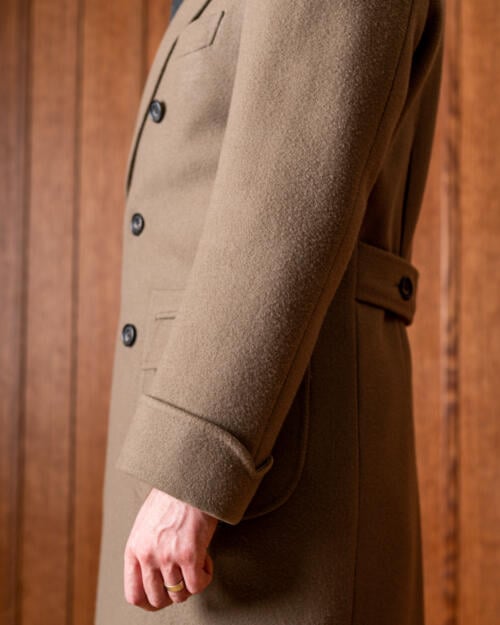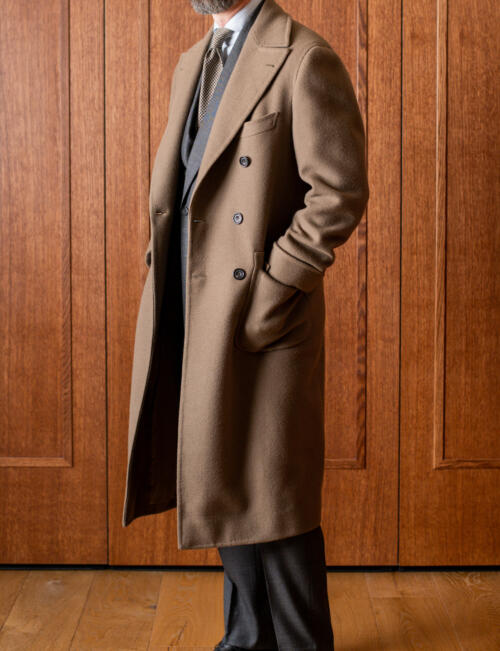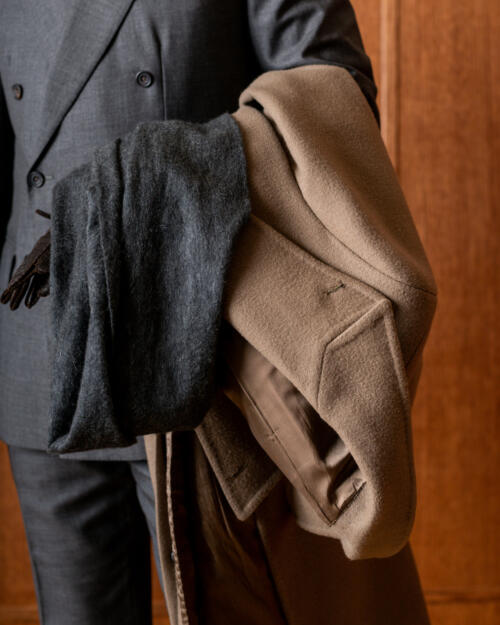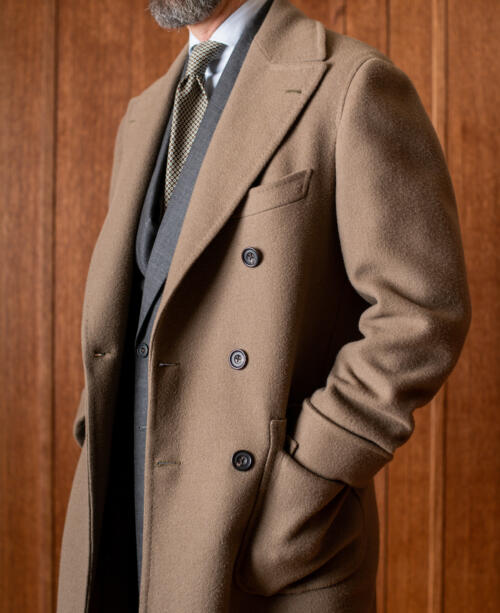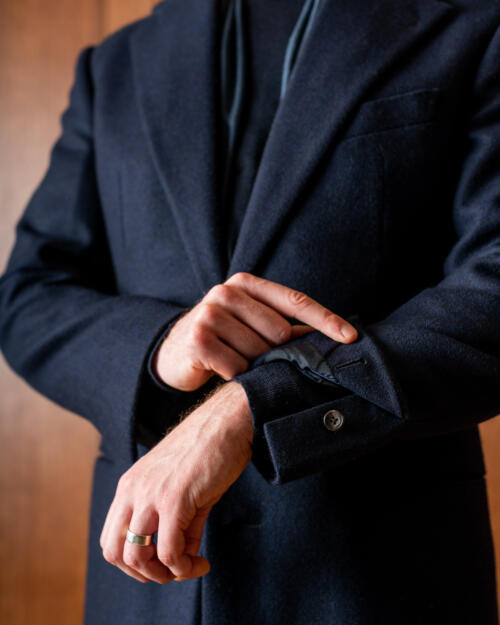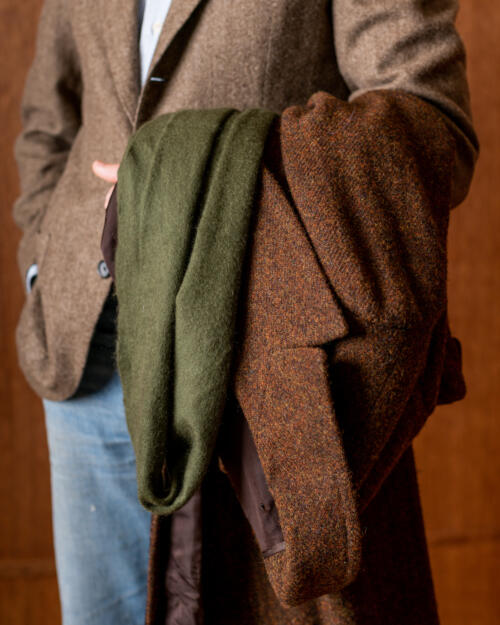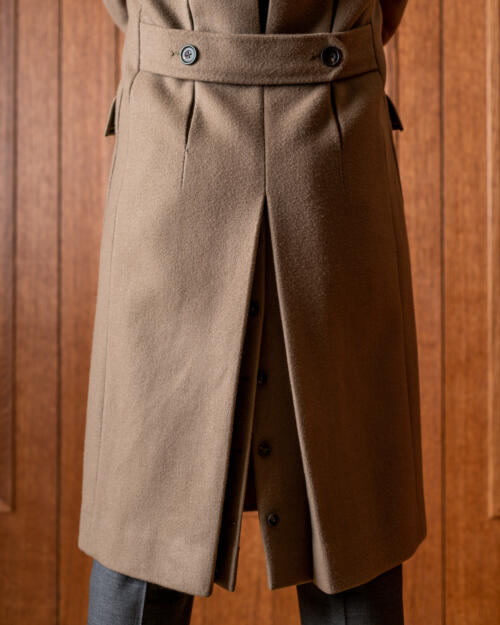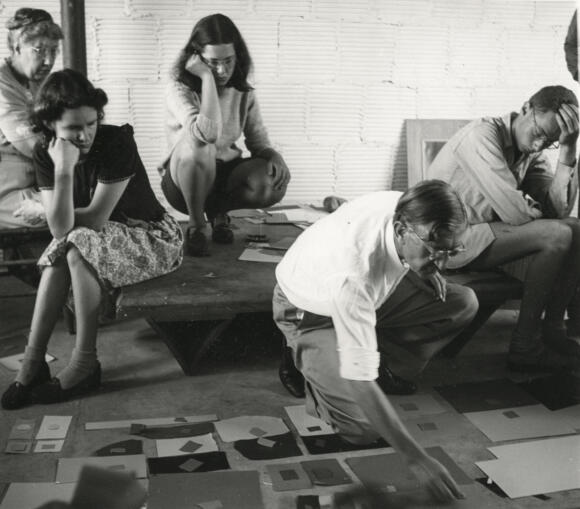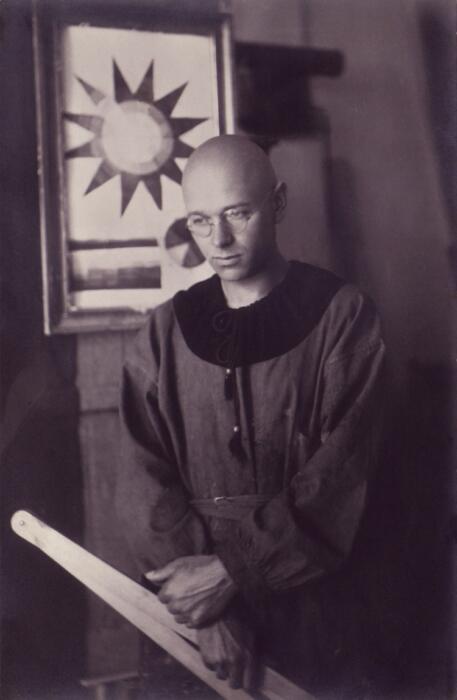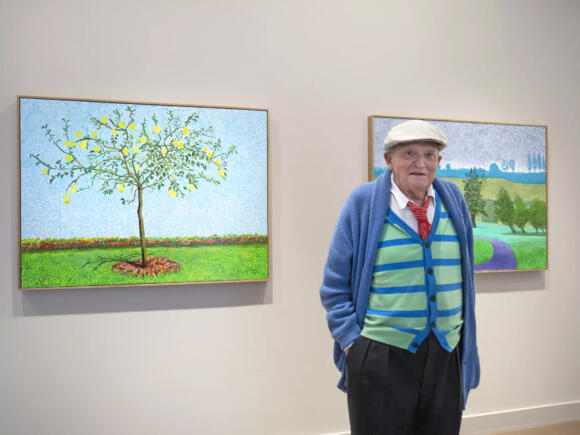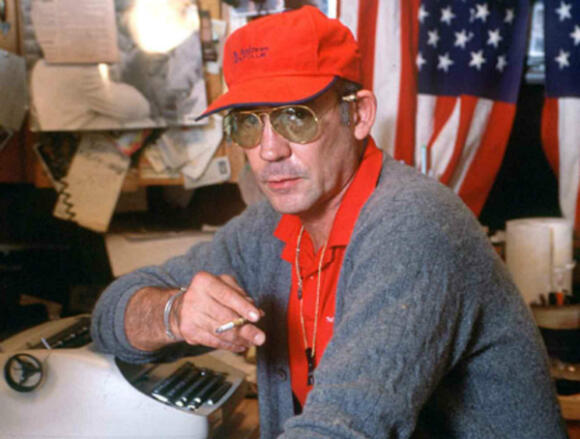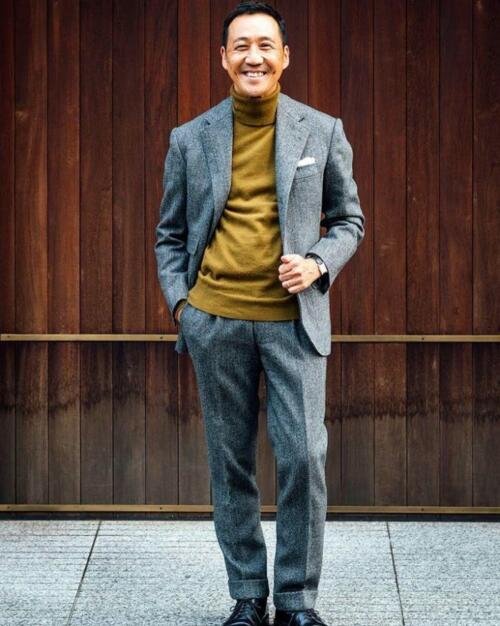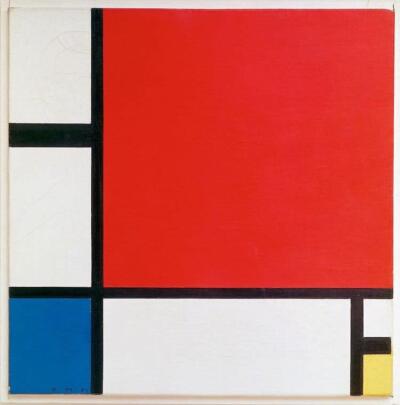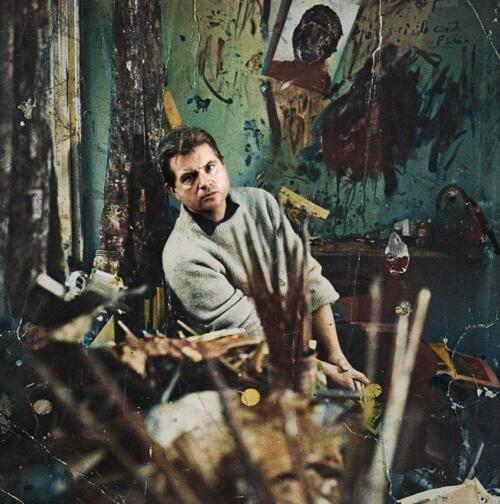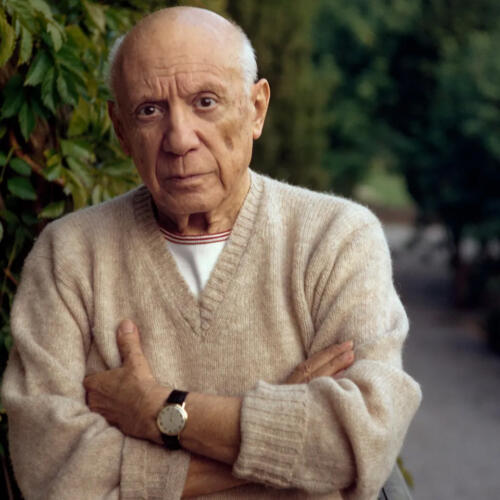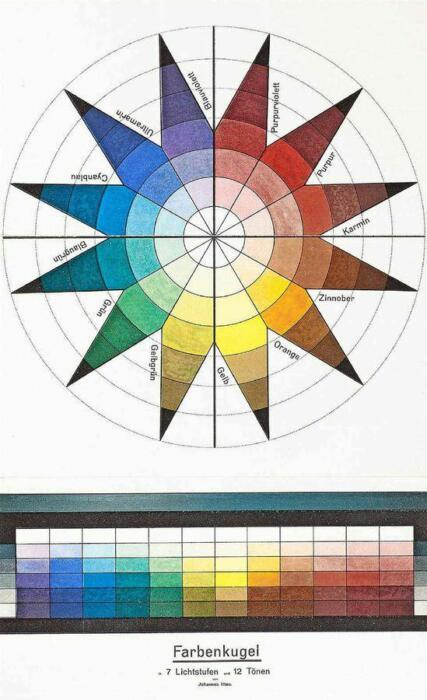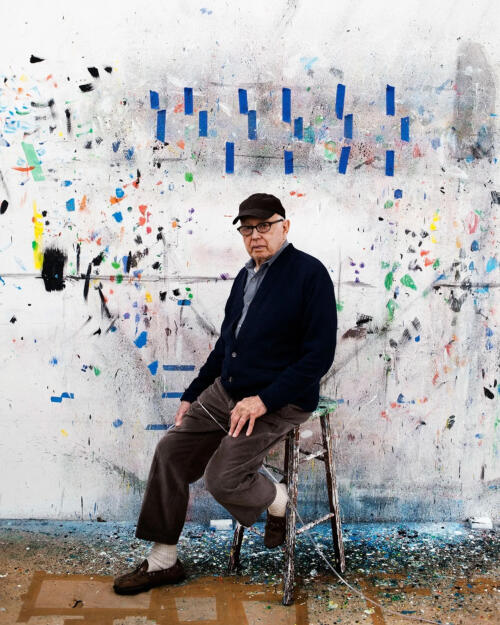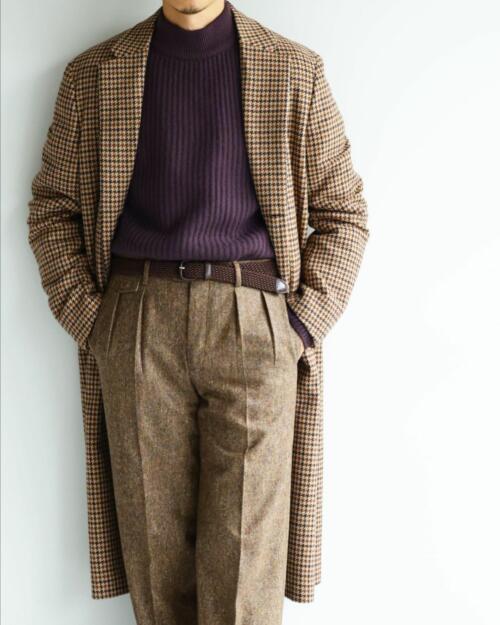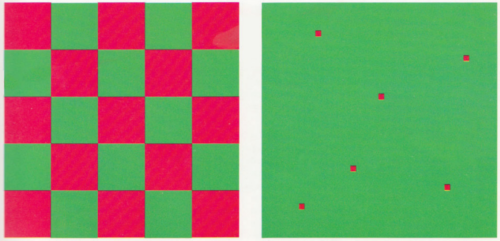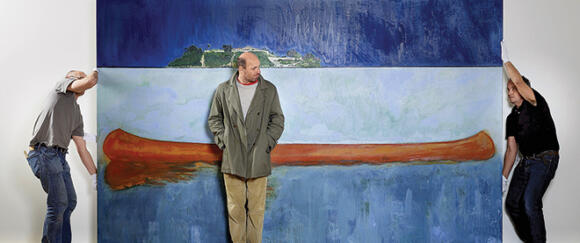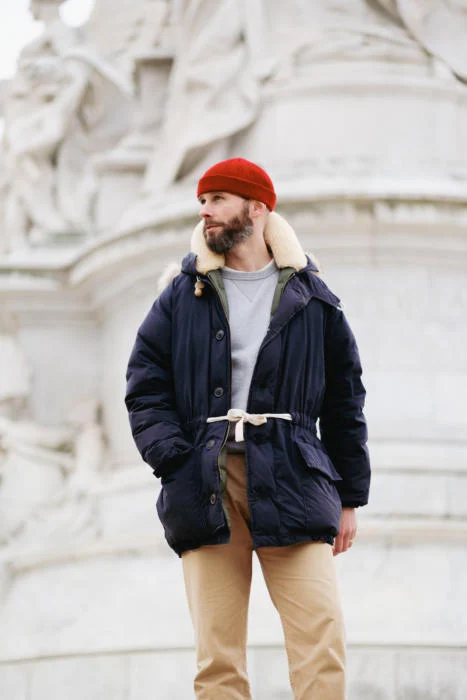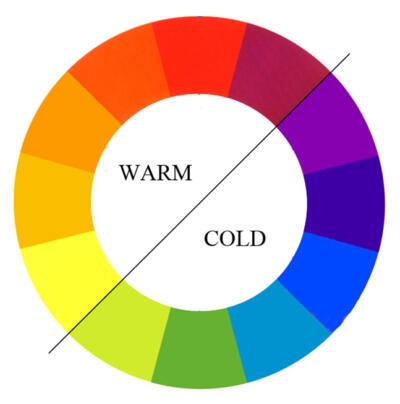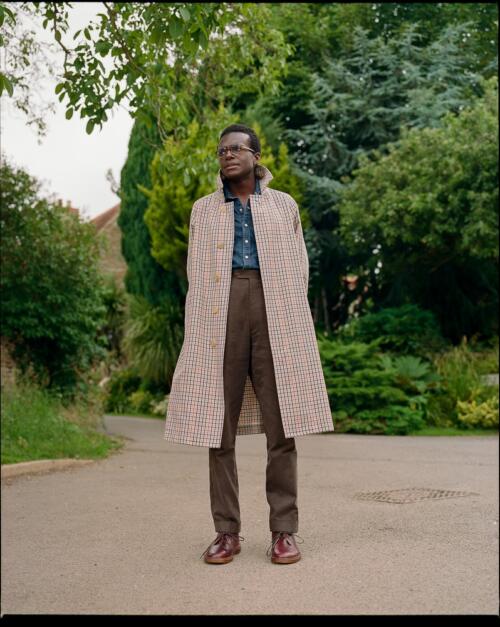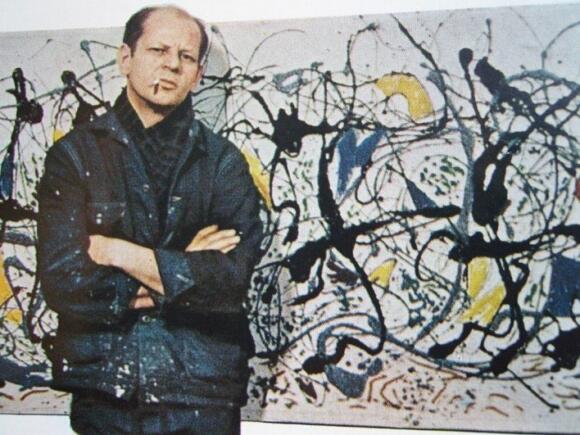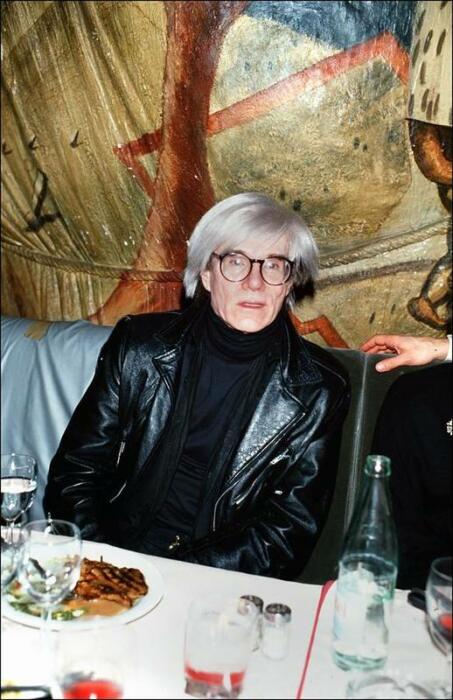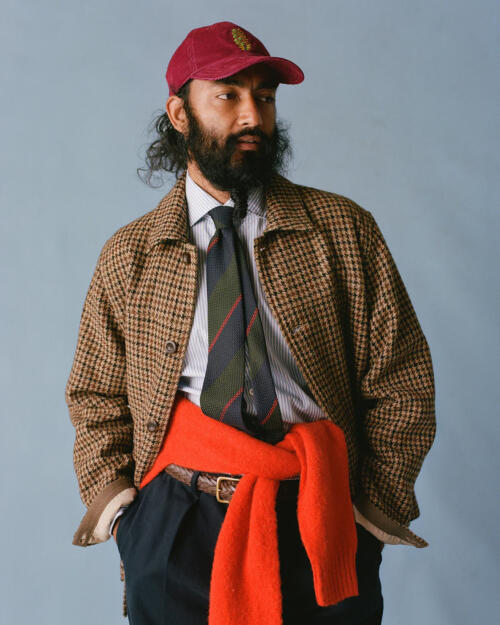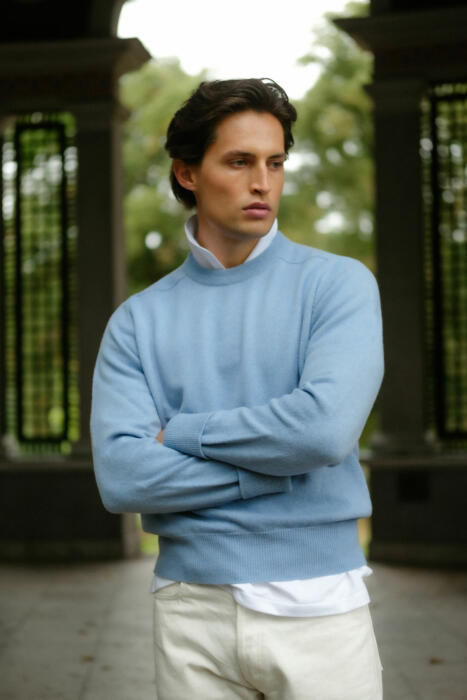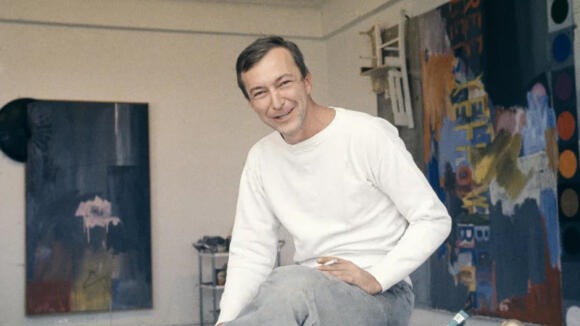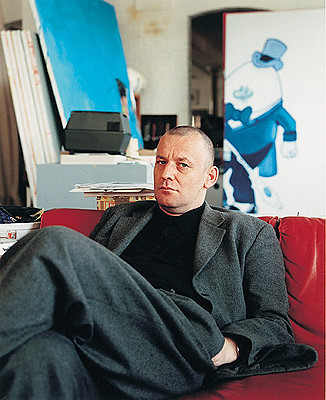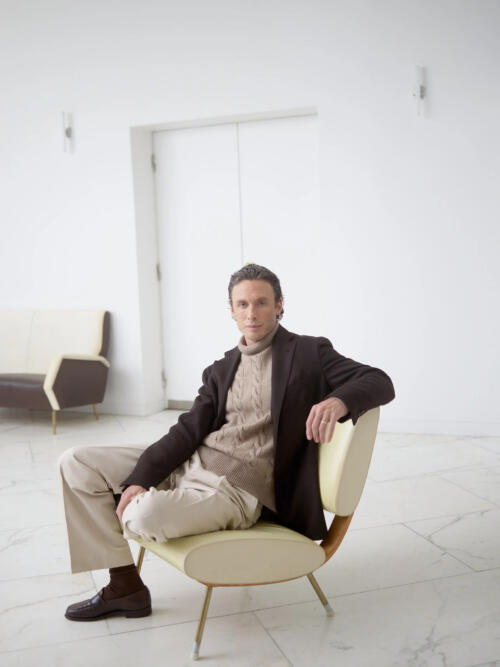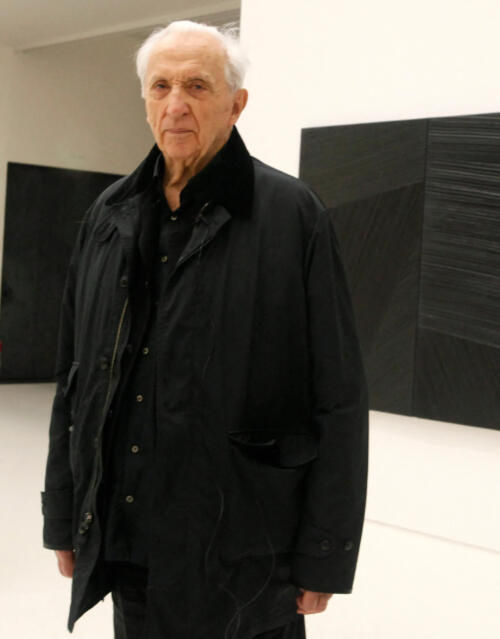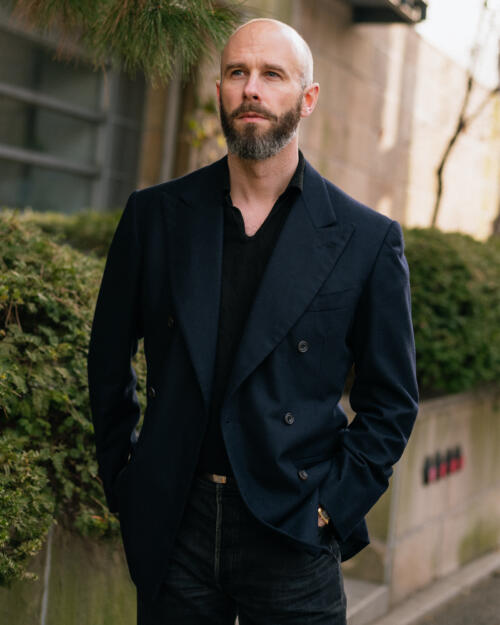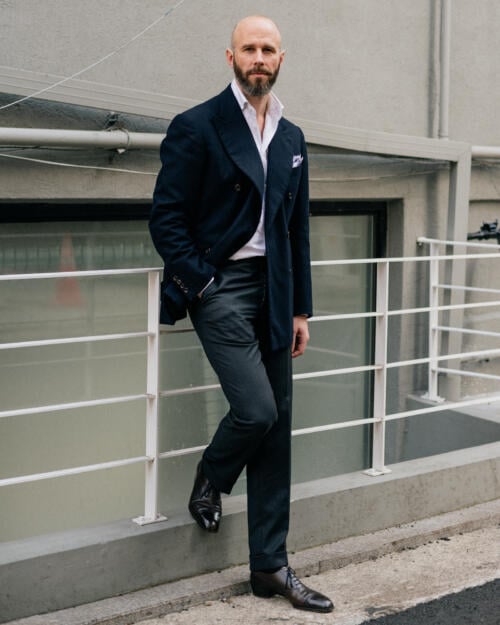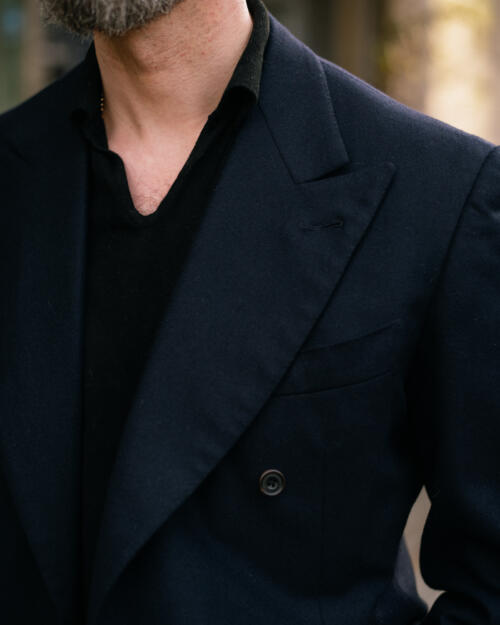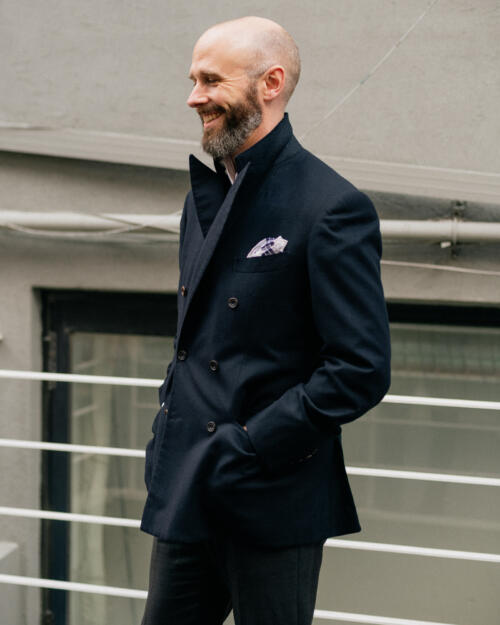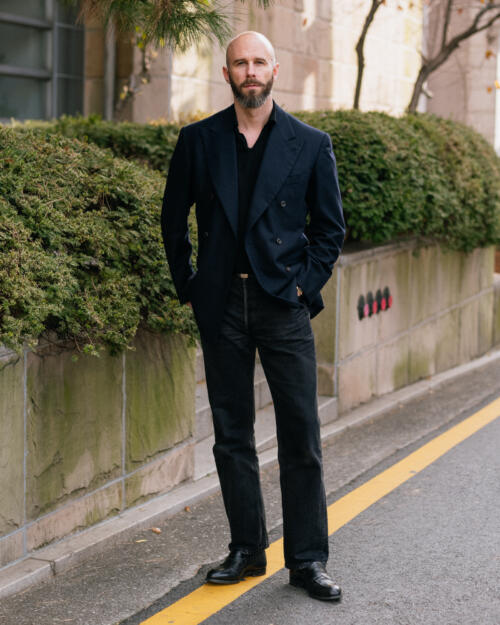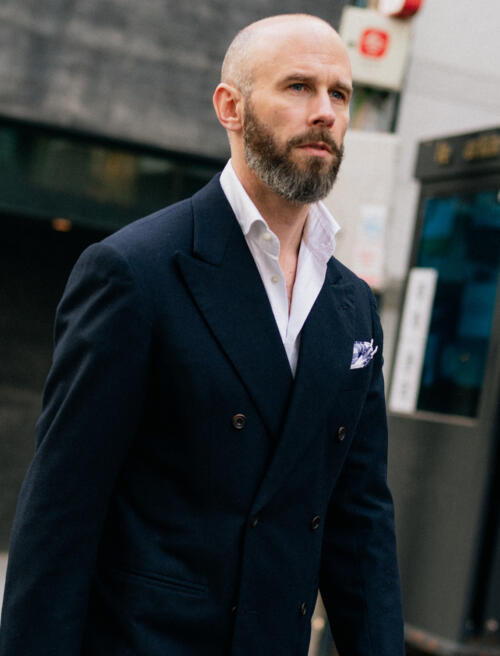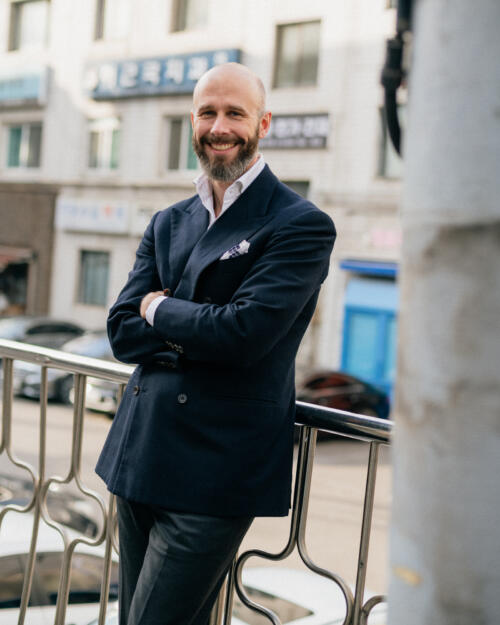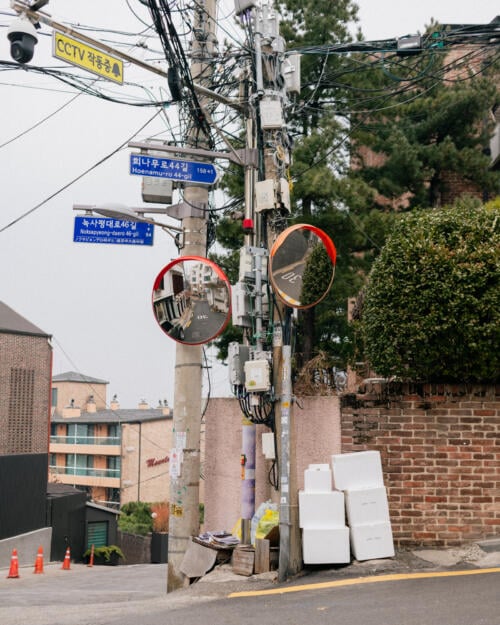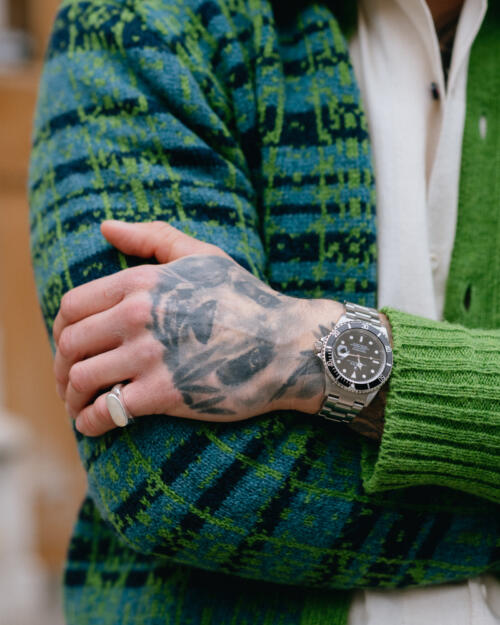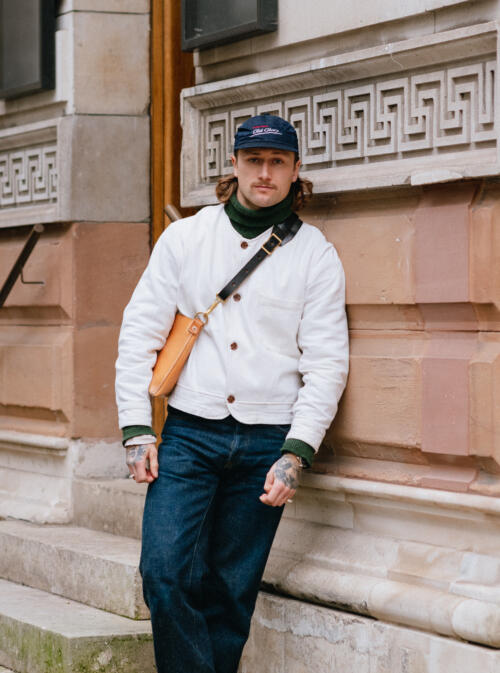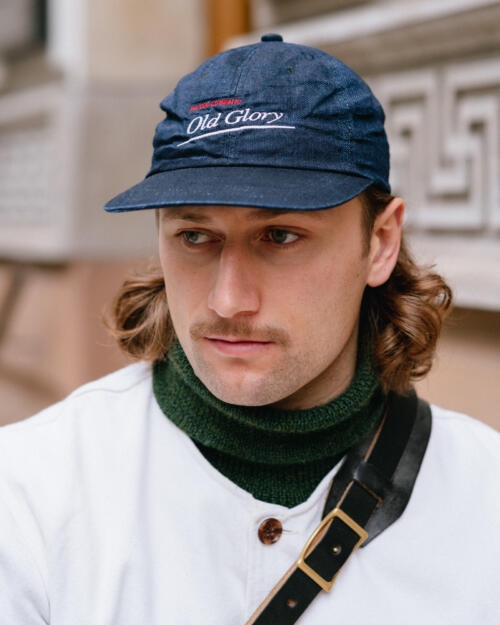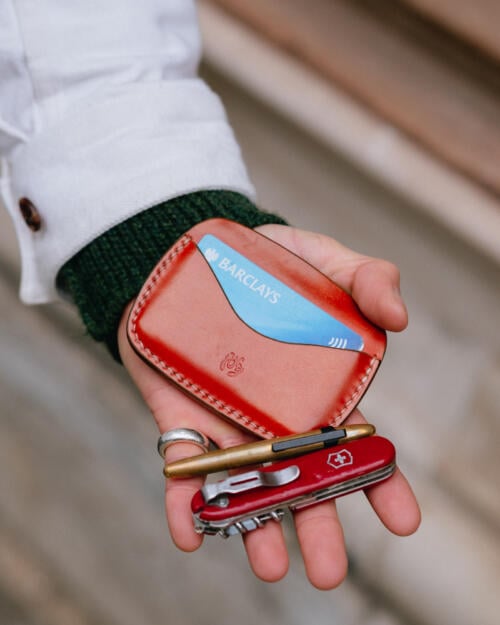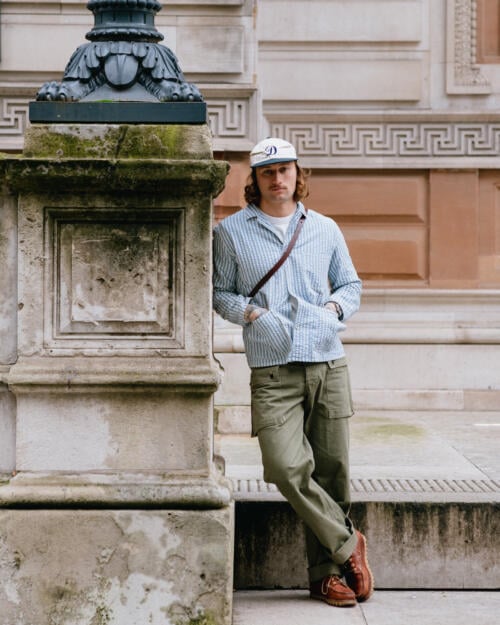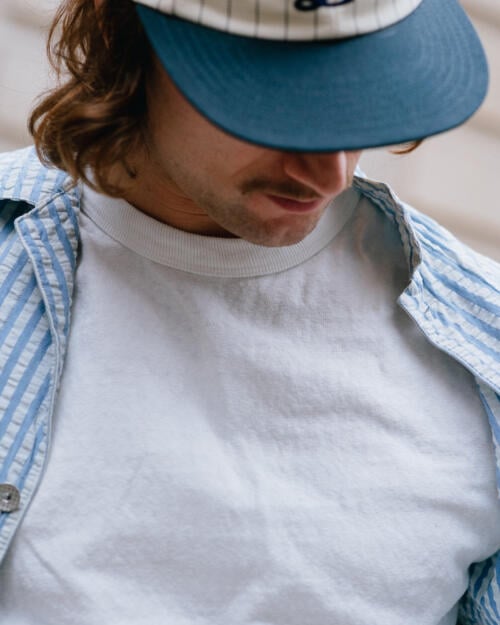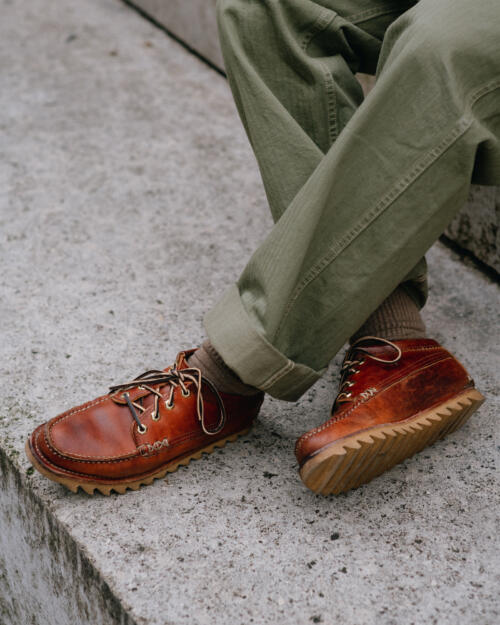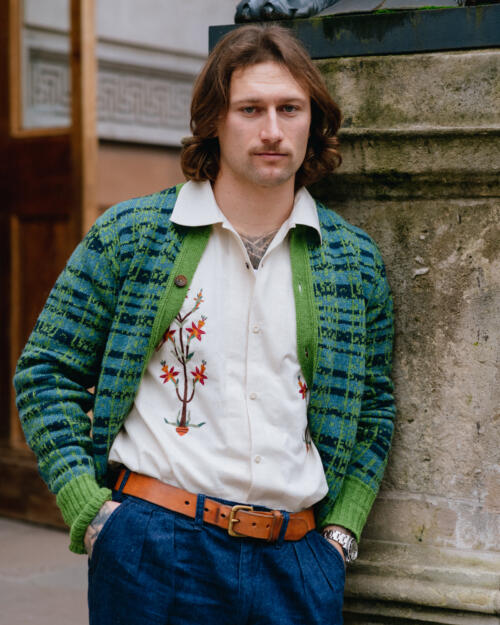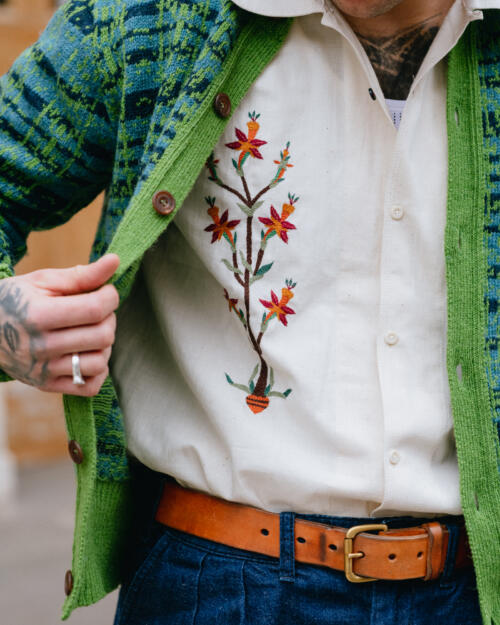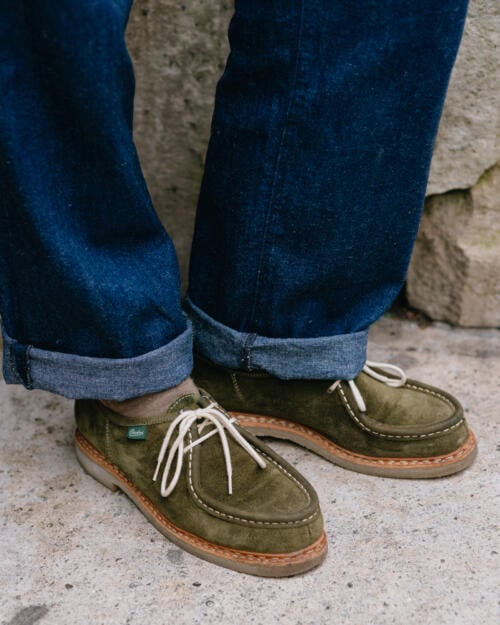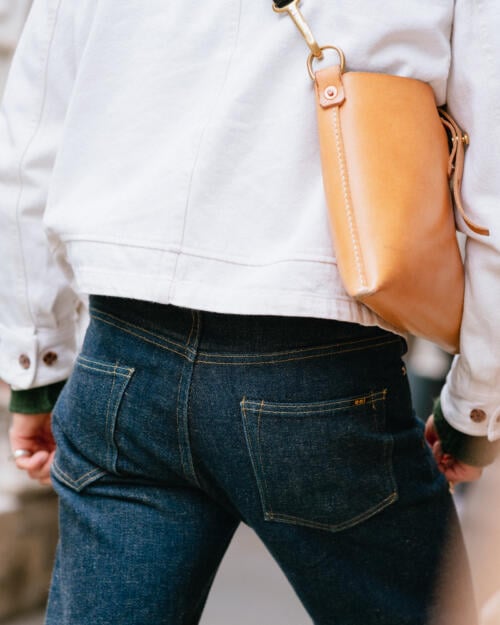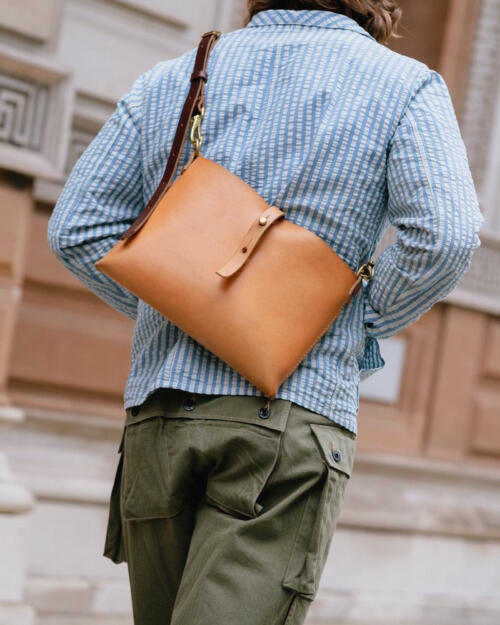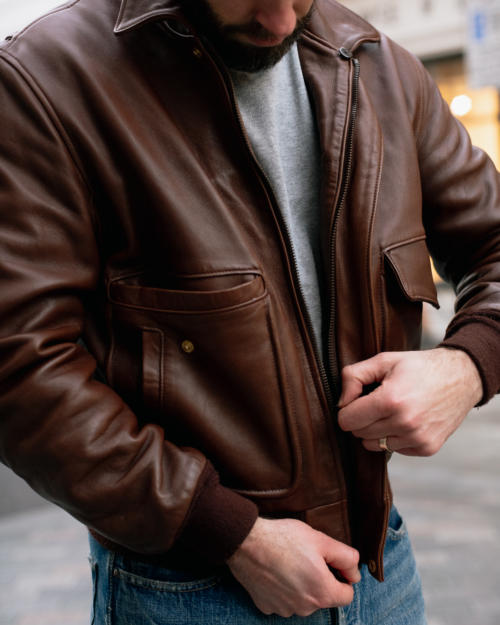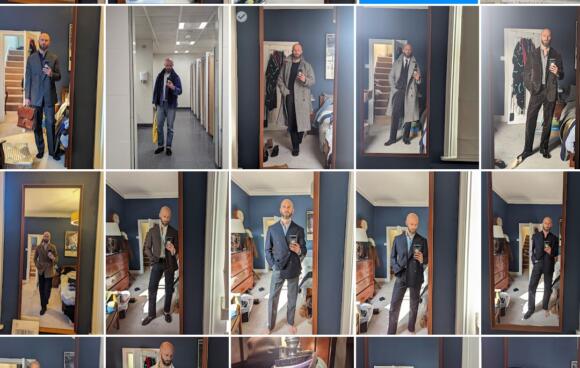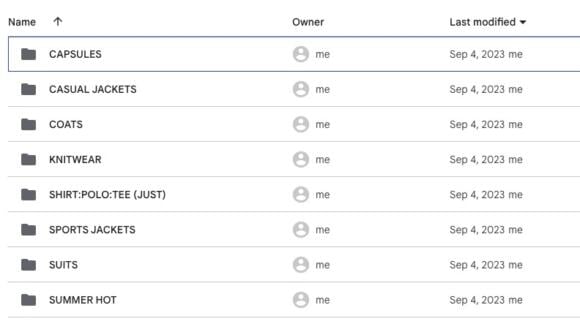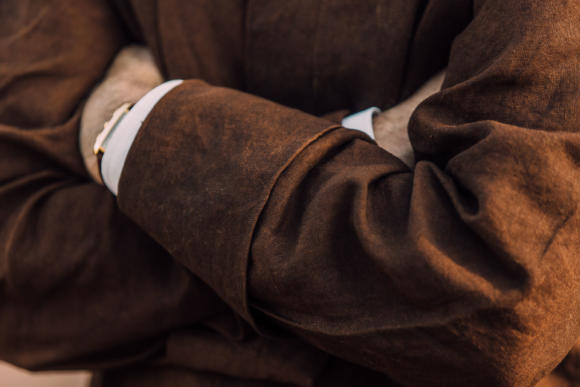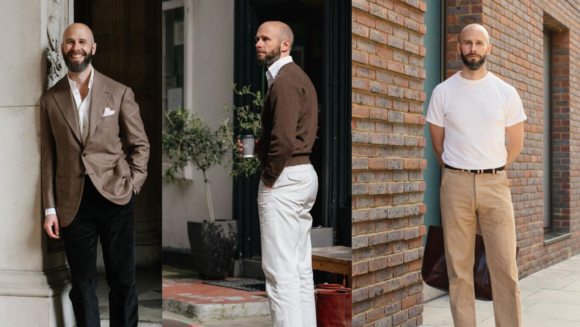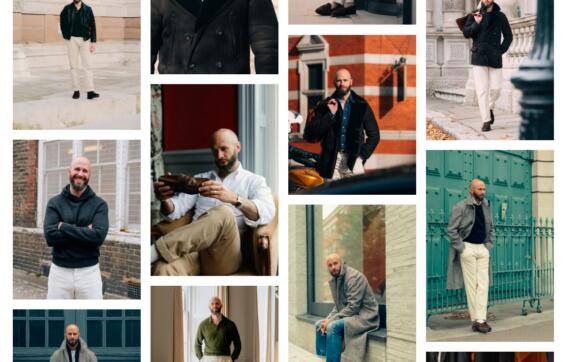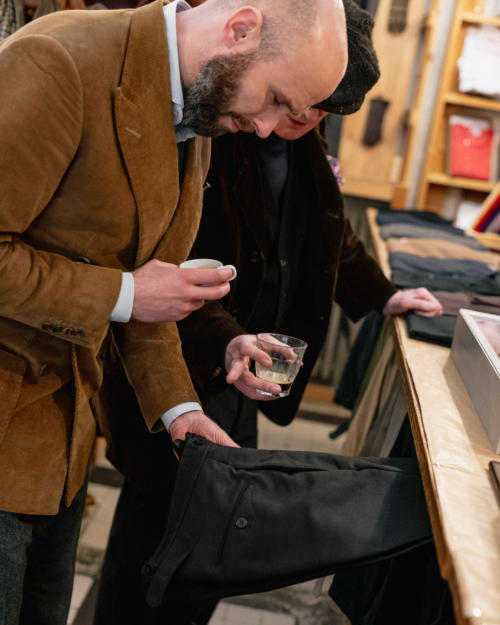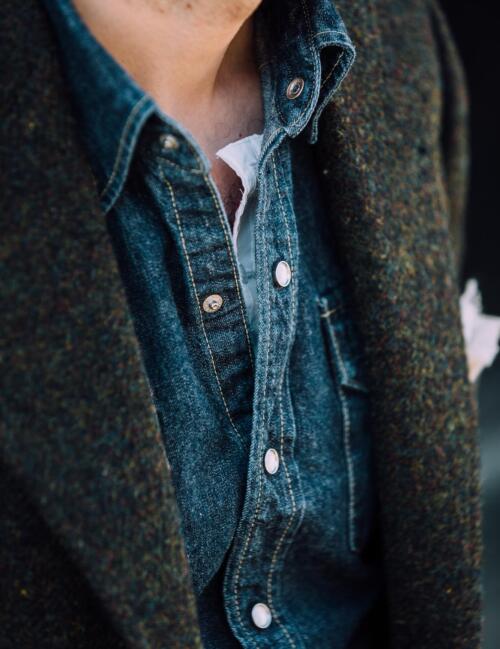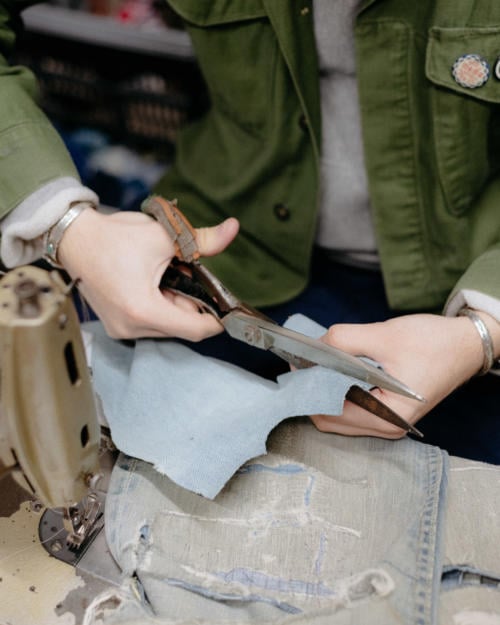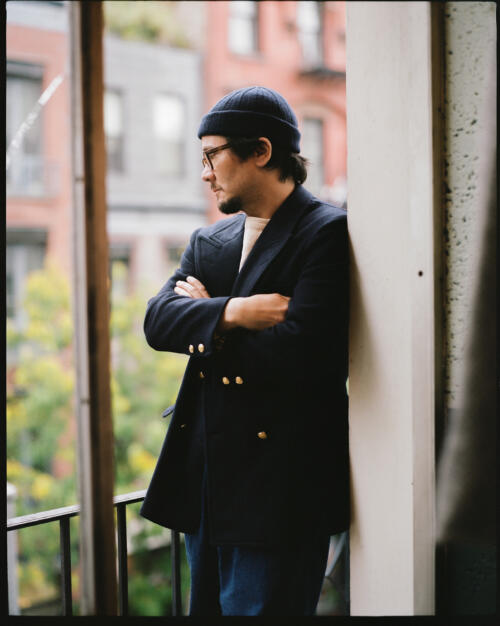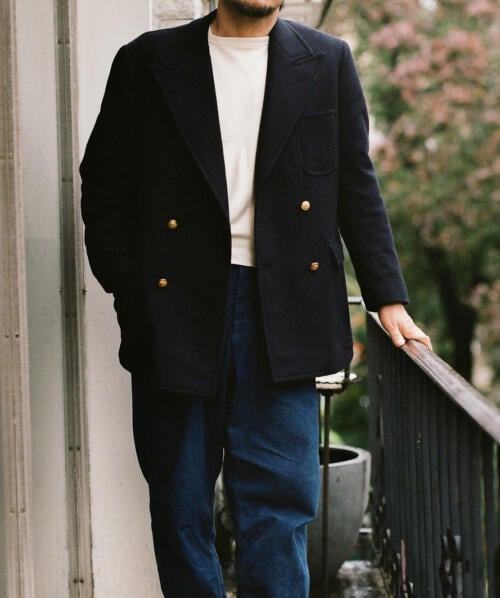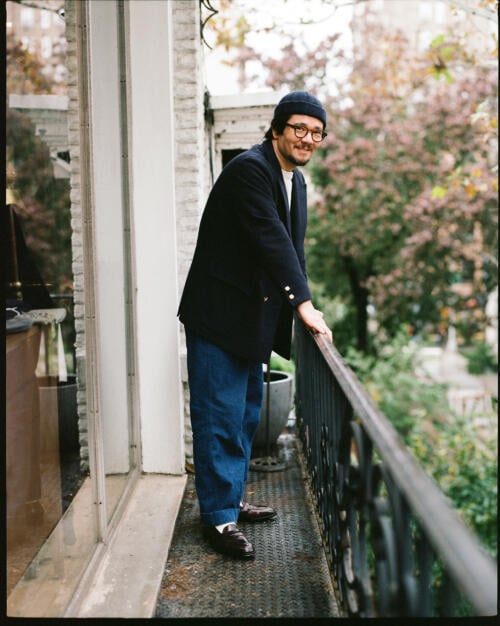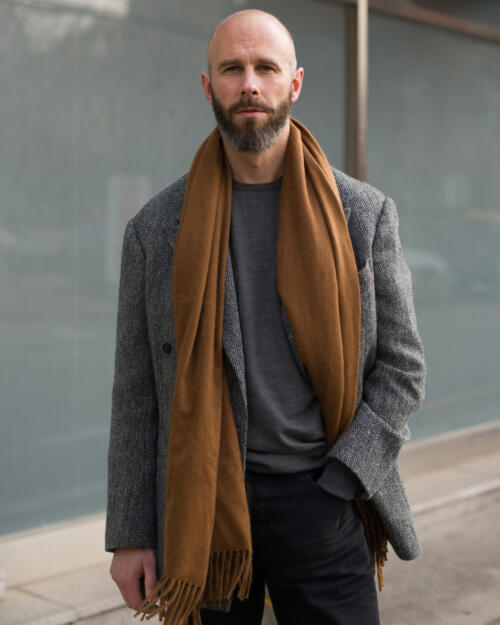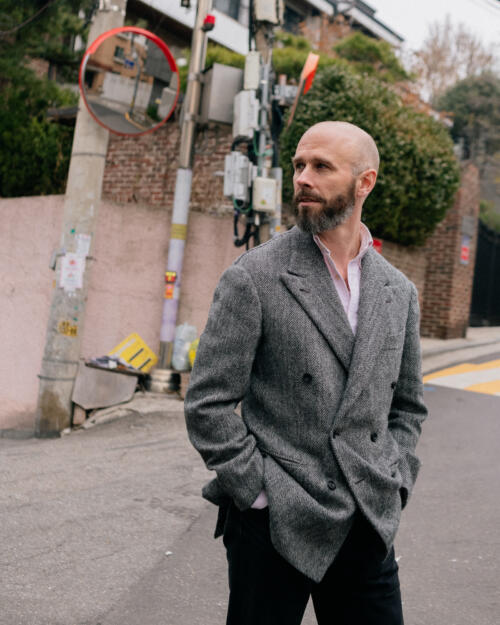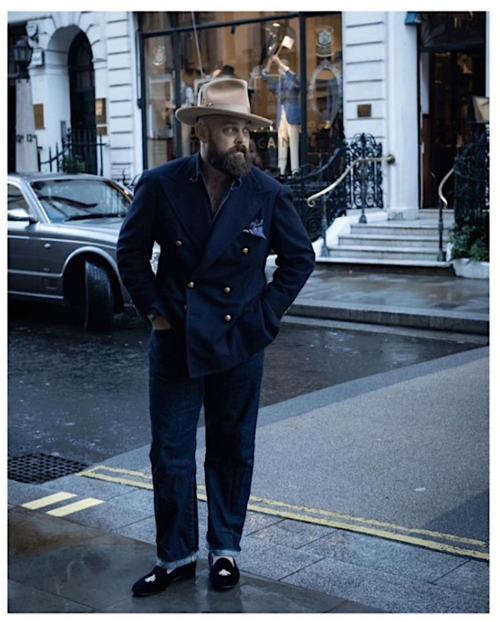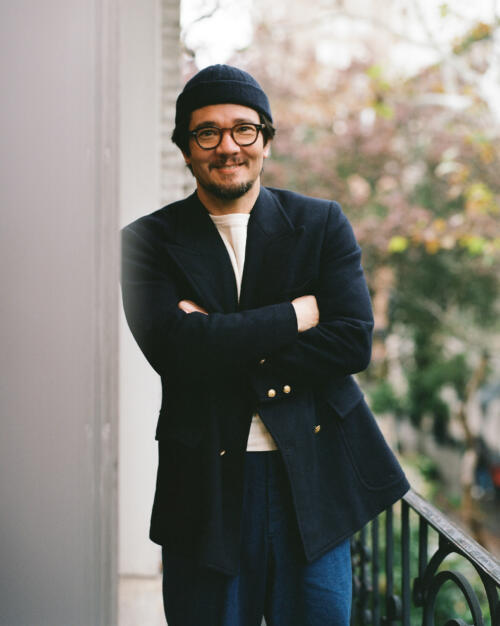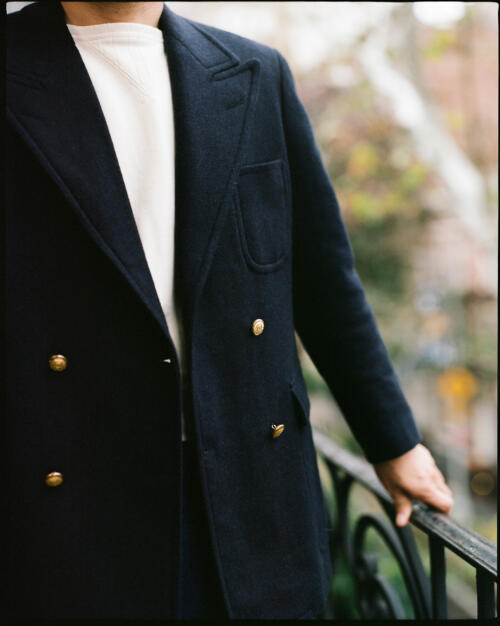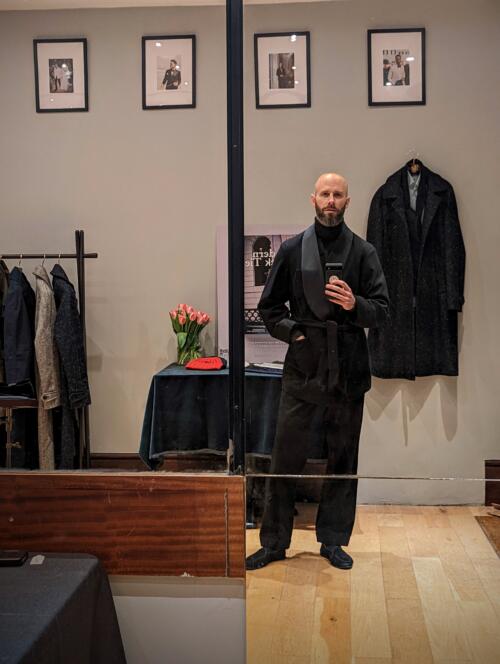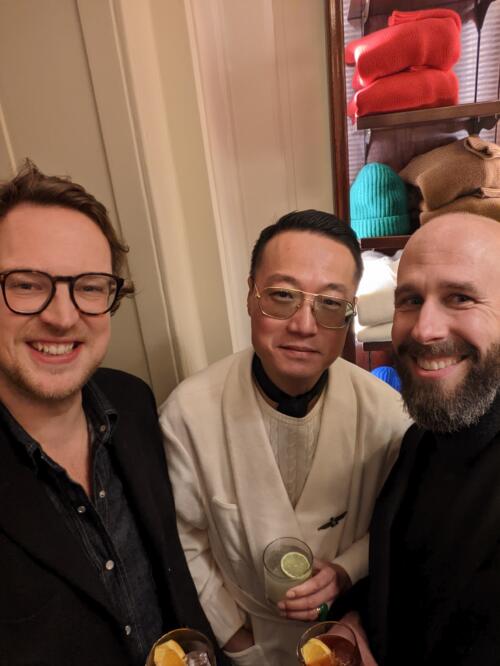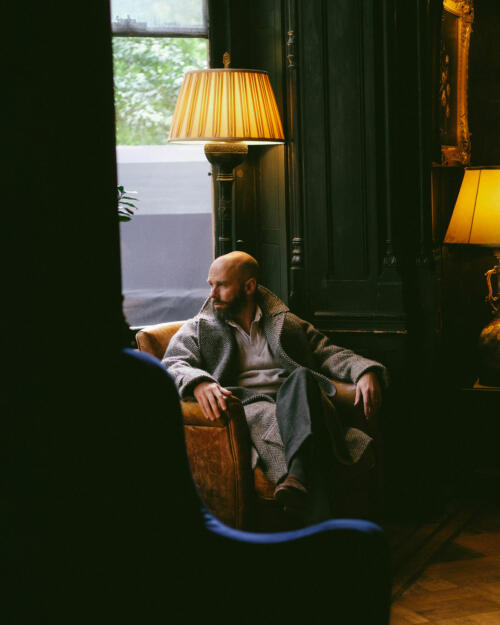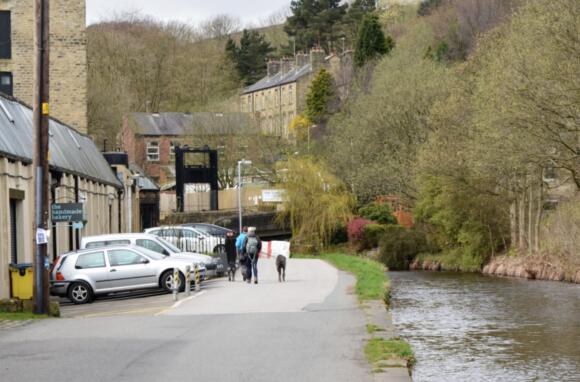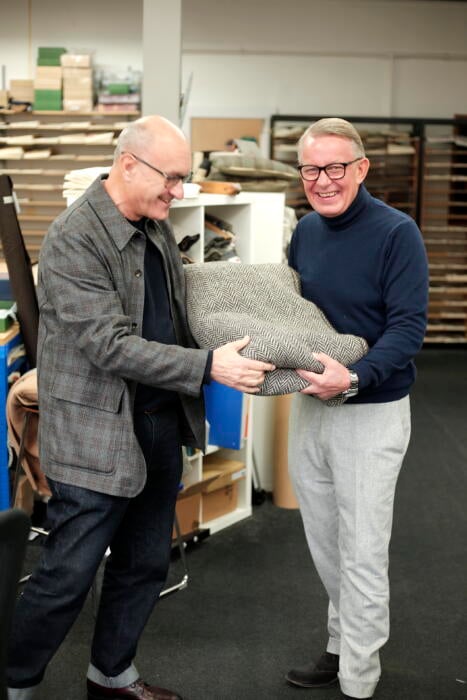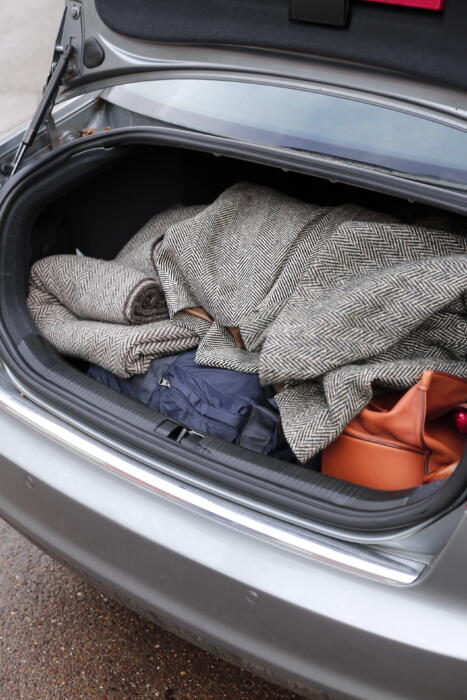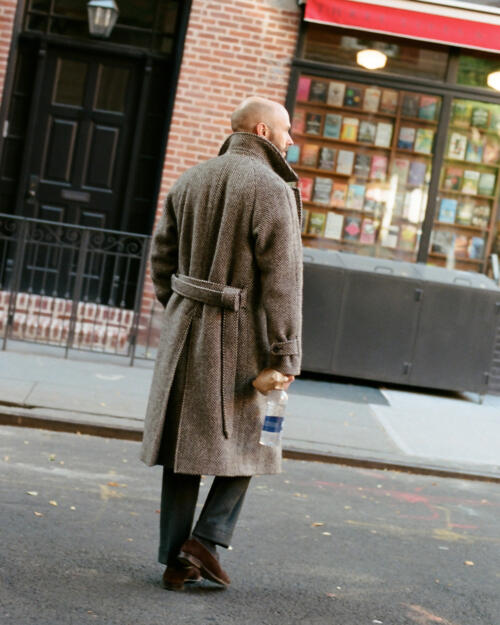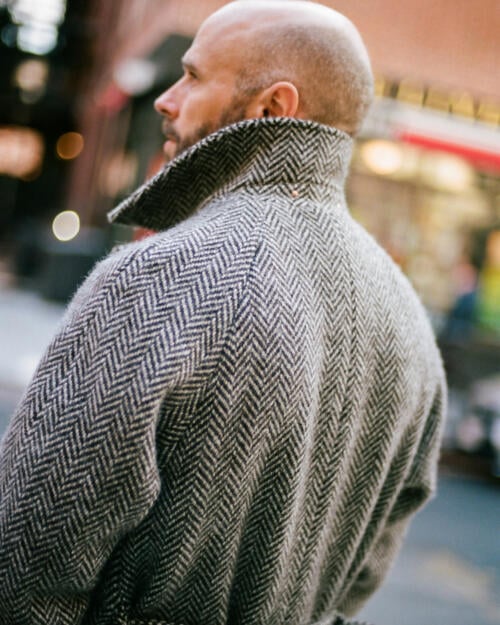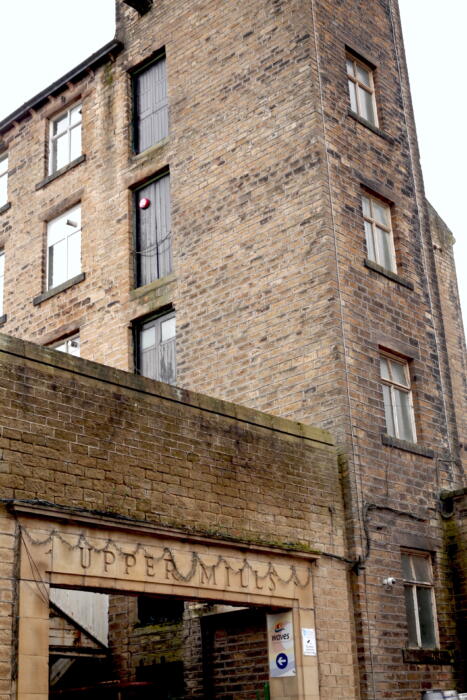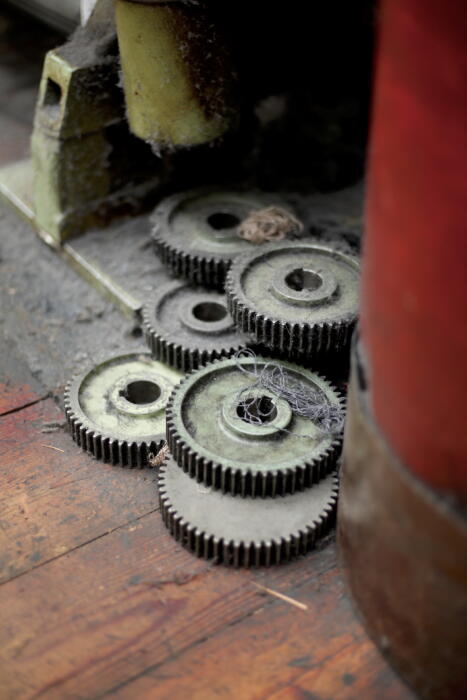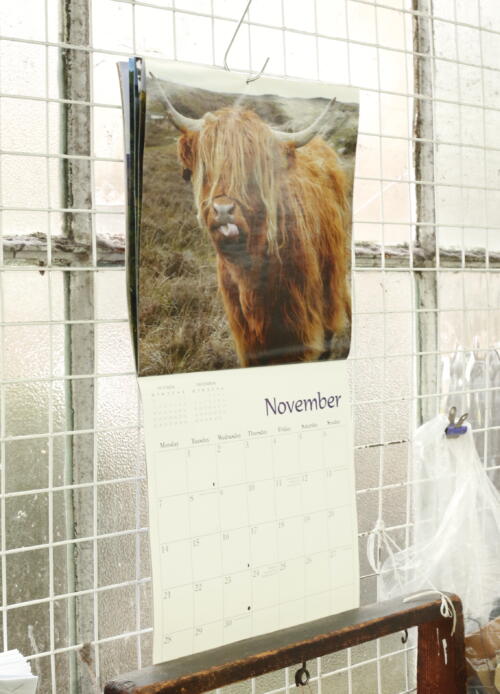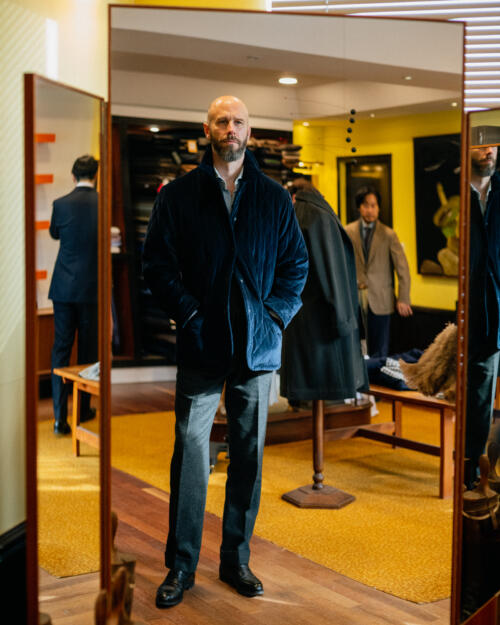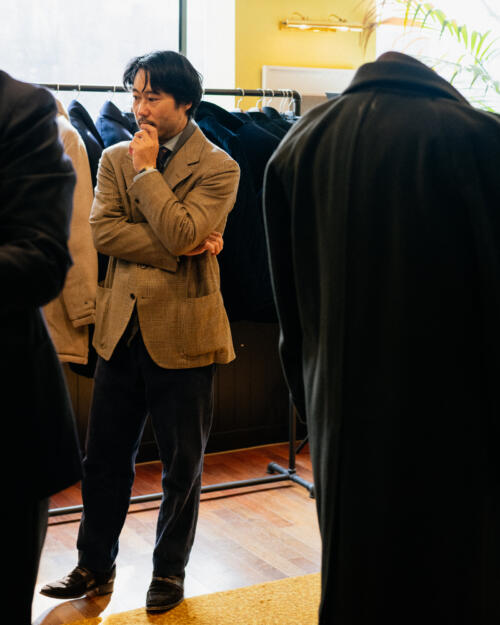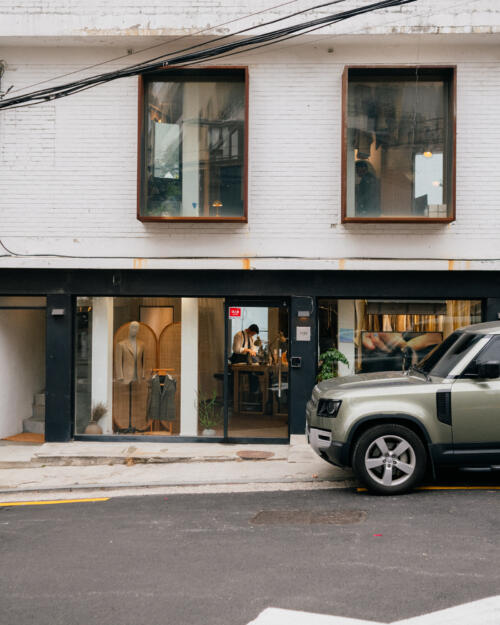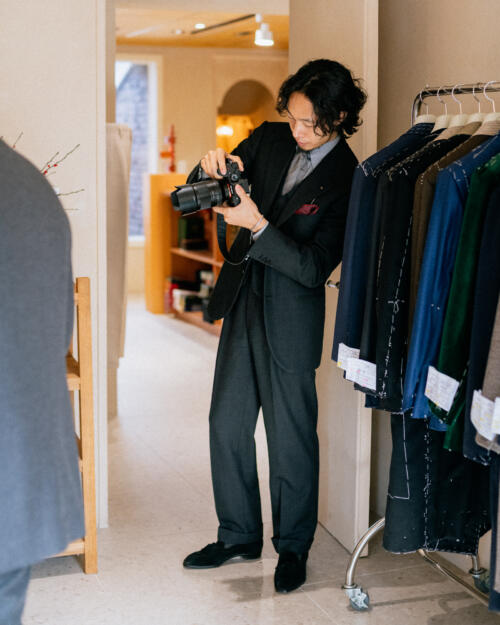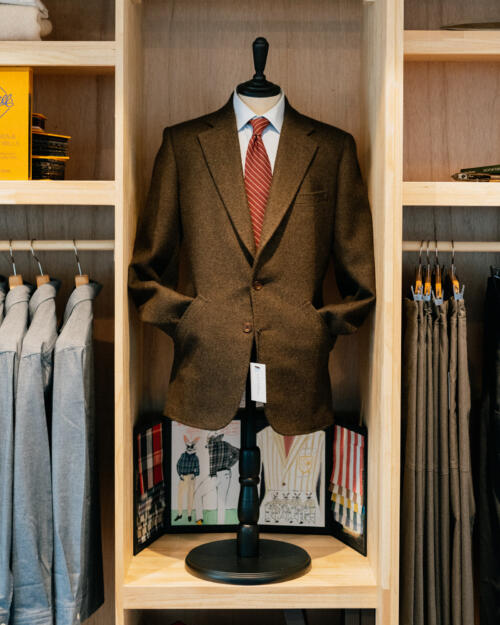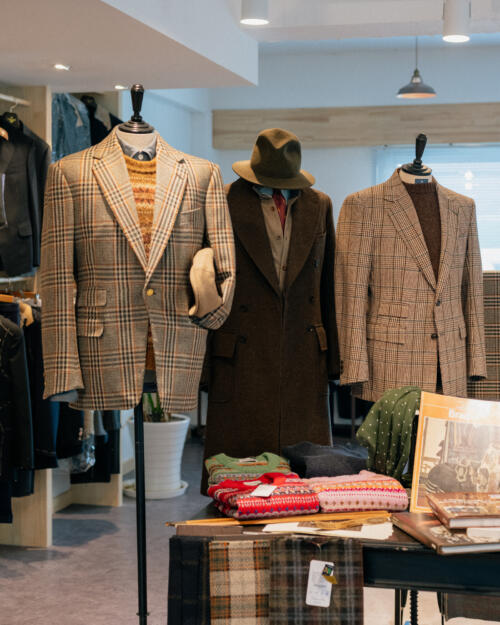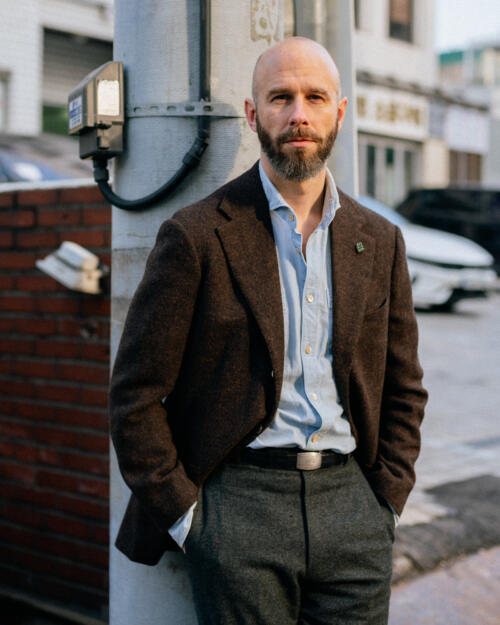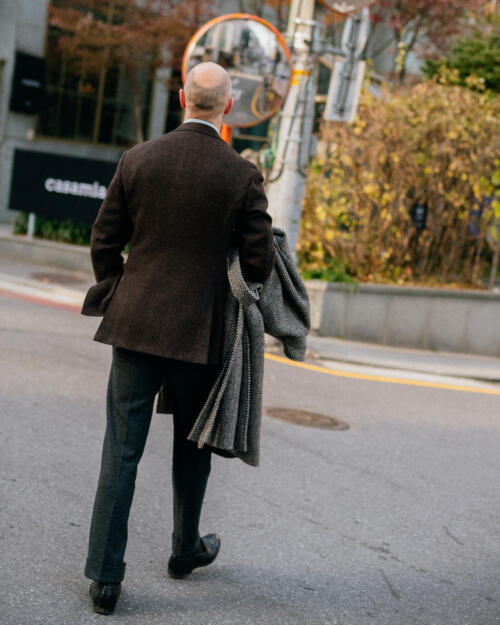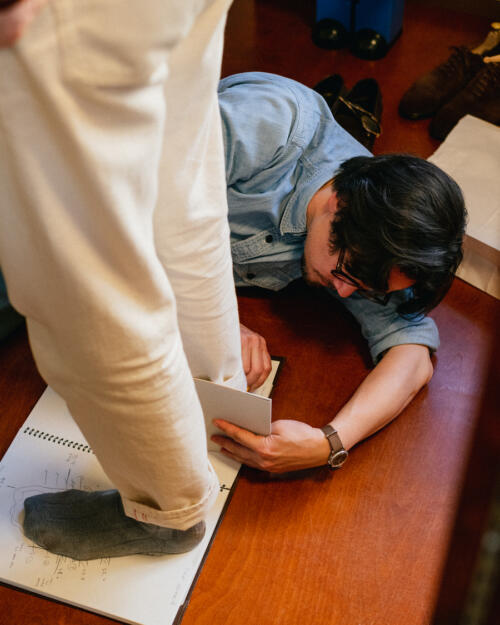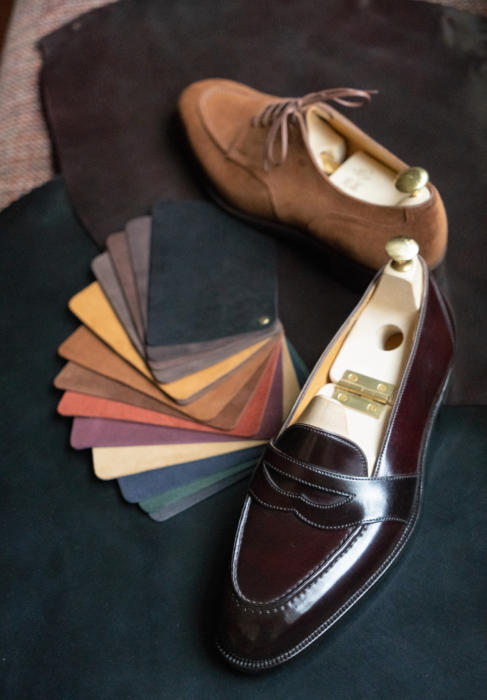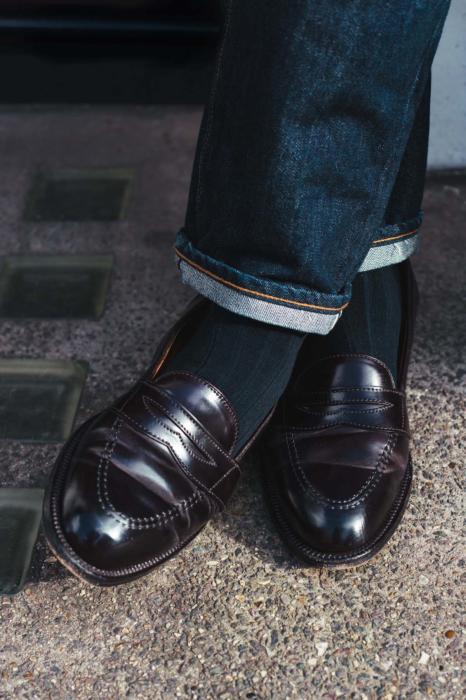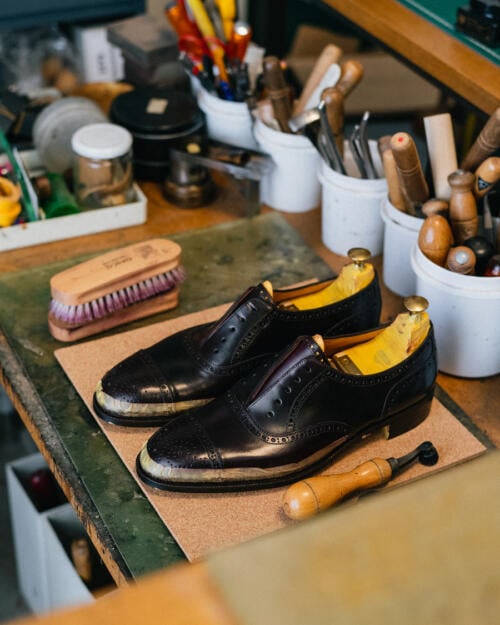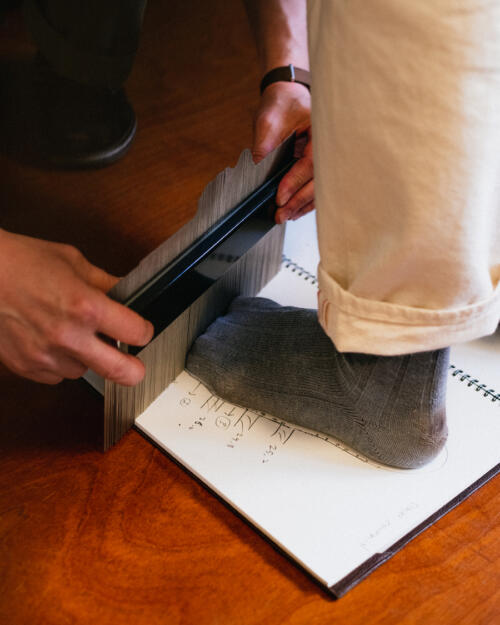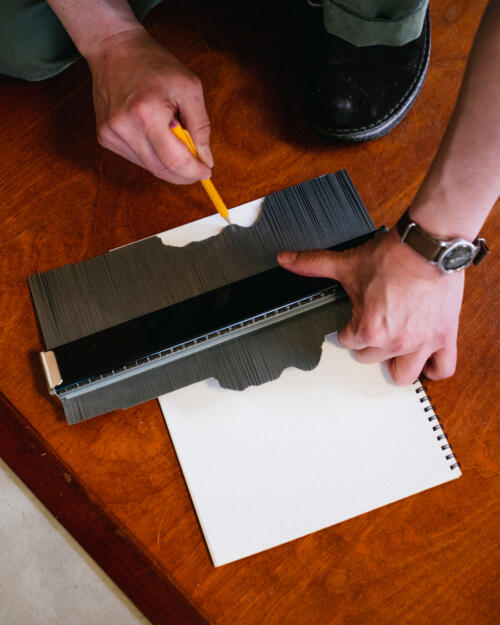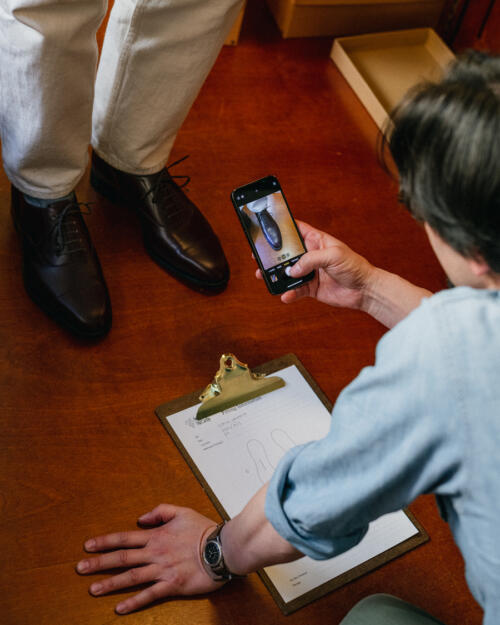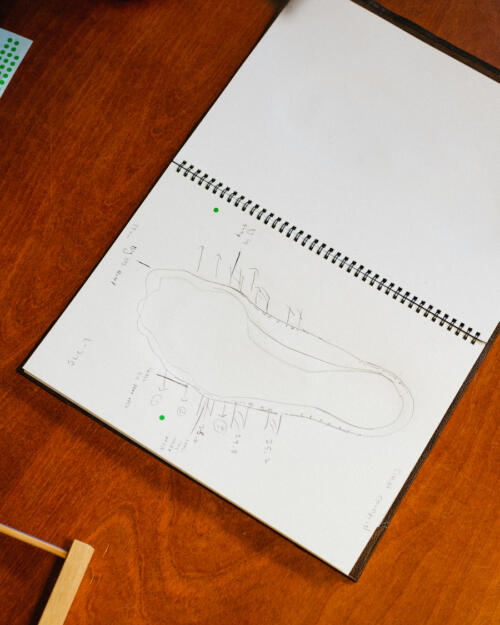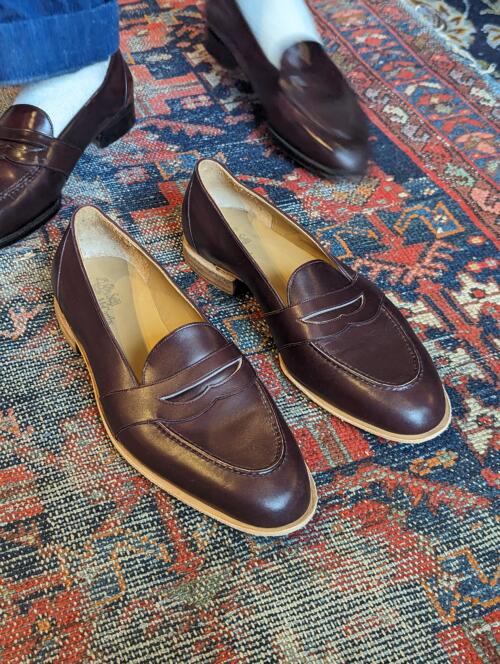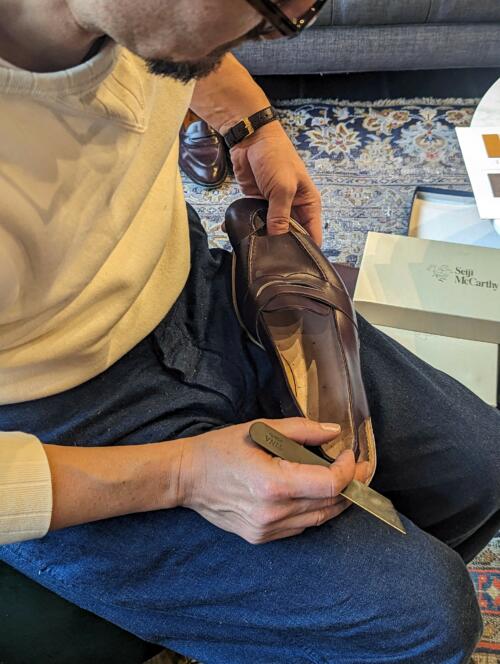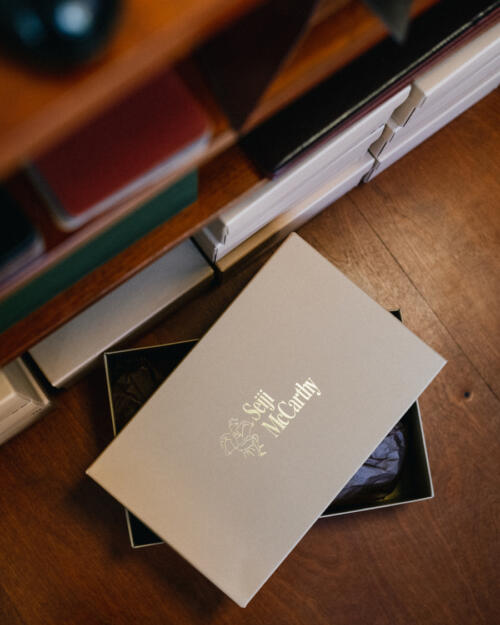Reader profile: James
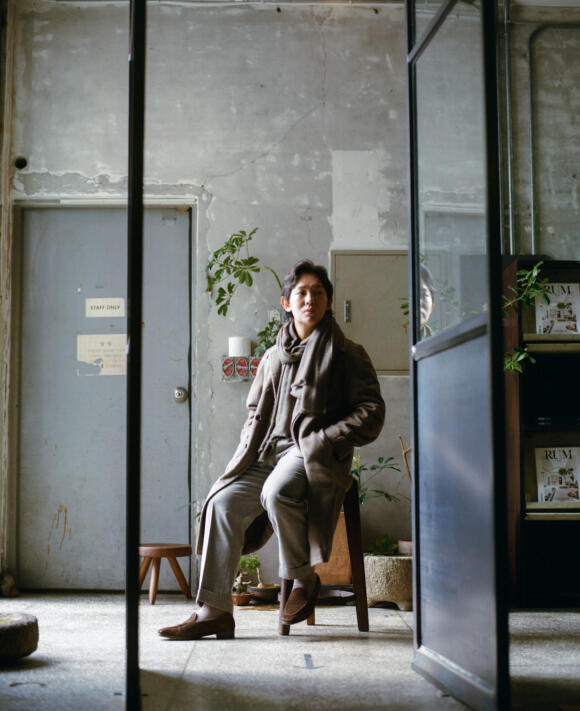
James is a reader I met in Korea last year. A friend of our host Sam Ahn, he joined us for dinner on the last night with Assisi.
James has been a customer of various bespoke tailors for about 10 years, but has largely settled down to using Sartoria Jun in Seoul. He likes the Neapolitan-like comfort, but also, interestingly, Jun’s level of taste, which he thinks many tailors lack. He also finds that most of his friends in Seoul have stopped using international tailors in favour of those in Korea or Japan.
His portraits were shot by Matt Choi in the Vint furniture gallery in Seoungsu-dong.
Outfit 1: Spring
- Jacket: Sartoria Jun
- Knit: Anderson & Sheppard
- Trousers: Sartoria Jun
- Shoes: Anthony Cleverley
- Socks: Votta (throughout)
- Bracelet: Cartier (throughout)
What do you do James?
I work in an asphalt and concrete business, serving the construction industry. I’m in a big office, and seeing everyone in tailoring was what first got me into tailoring originally. My Dad was always very smartly dressed too.
But you’re dressed in a very consistent way in these shots, a more tonal and relaxed version of tailoring?
Yes, most people in the office don’t wear a suit and tie any more, they wear polo shirts or something like that. It got to the stage that someone would always ask you where you were going if you wear wearing a suit, so I started dressing more casually - this was three or four years ago.
I’m very consistent now in what I wear - soft jackets and trousers, usually with knitwear or a T-shirt. I like understated colours and textures, so also suede shoes rather than leather. These three outfits represent how I dress through different seasons of the year here - the coat and scarf in winter, jacket and knit in spring, T-shirt and lightweight jacket in summer.
Is that OK with the weather, it seems to involve a lot of pale trousers for instance.
Yes it’s OK most of the time in Seoul - I probably wear one of these types of outfits 300 days of the year. The trousers are a foundation piece for me too, I have five pairs all in pretty much the same colour. Not white, as that’s a bit too flash on men, but types of off-white.
Is this kind of look unusual in Seoul? I don’t feel I saw many people wearing it.
No it is quite unusual, you’re right. Soft and comfortable things are popular, but you don’t see many people wearing tonal tailoring like this. I like that - it feels personal but also understated and well-dressed.
A lot of tailoring in Korea is still quite flashy - I think you saw a lot of that kind of thing at Sam’s party. Loud ties, lots of patterns, lots of pocket squares. That was the style that became big when tailoring was very fashionable here.
That probably happens everywhere, right? When something is trendy, a lot of people go over the top. It certainly happened in Europe, and you always used to see it at Pitti.
Yes, it’s fading here now, but it’s the same kind of attitude that makes people want to adopt fashions very quickly and intensely. Koreans have a tendency to do that as a whole, but I’m sure it happens everywhere.
Outfit 2: Summer
- Jacket: Antonio Pascariello
- T-shirt: James Perse
- Trousers: Sartoria Jun
- Shoes: Aubercy
Which tailors have you tried?
I think maybe 10 in total, mostly Italian, Korean, Japanese. I used Antonio Pascariello in Naples, who made this houndstooth jacket, some in Florence, Ciccio and Anglofilo in Japan, Jun in Korea obviously.
You never travelled to the UK?
No, just Italy really. And today I pretty much only use Jun - maybe for 90% of things. He has a very personal aesthetic and an interest in clothes that you don’t really find in most places. I wish more tailors cared about style to be honest, it would make things a lot easier. They are wonderful craftsmen, but the style side doesn’t interest them much.
Jun is always thinking about that, and we have long conversations about the history of style. He imports his buttons from Italy because it’s hard to get good ones here. In fact I think that’s one of the things that also swayed it for me - I could talk to Jun and discuss clothing where I couldn’t with anyone in Italy.
Do you always wear these kind of fabrics?
Yes I think that’s been part of the evolution. It’s important to be able to try different things as a customer, and fabrics is a big part of that. Trying tweed and cashmere, for example. I find I prefer the softness, the drapiness of cashmere and that type of fabric.
It’s actually been something that Permanent Style has been very useful for over the years - discussion of fabrics, weight and weave, how they perform and feel.
The other thing I like about your writing is the way you assess what the best is in a particular category - like T-shirts for example. There are so many out there, and you might end up having ones from 10 different brands. But you break it down and explain what the characteristics of each are, so you understand what something is good or bad at.
Where is this T-shirt from?
It’s from James Perse. I like his clothes because they’re in washed materials, which fits in with the kinds of colours and look I like.
What do you like about Jun’s style?
Mostly how comfortable it feels, but also masculine. It’s elegant, but it isn’t fitted anywhere - it just sits on the body well. The shoulders aren’t too big or too small, the waist is always comfortable. It's very well-balanced.
I found that I always reached for my Jun jackets, even when I had lots of other pieces from other tailors. I knew I would look good in it, but I'd also be very comfortable. So over time I gradually got everything from him.
I know you didn’t have much time to see him on this recent trip, but if you ever come again we should go see him together. It would be good to talk about his aesthetic.
Yes we only talked briefly unfortunately. His son was ill so he had to get home.
He doesn’t travel to Pitti anymore either, because he has a family. His wife would kill him if he travelled as much as he used to!
Outfit 3: Winter
- Coat: Sartoria Jun
- Knit: Loro Piana
- Scarf: Denis Colomb
- Trousers: Sartoria Jun
- Shoes: Anthony Cleverley
I think this might be my favourite of the three looks. I like the V-neck underneath without a T-shirt, though I don’t think I really have the shoulders to pull it off.
Thanks. Actually I only tried wearing my cashmere knits without a T-shirt underneath recently, but it’s so comfortable, a really different level. And you really appreciate the cashmere in a different way.
I think I’d find it a little uncomfortable, at least by the end of the day. Do you not?
No it’s fine, but I think people feel these things differently. It’s also what got me into wearing more scarves, like this one from Denis Colomb. They’re really great by the way, the best scarves I’ve tried, you should look at them.
Thanks, I don’t know them at all. I’m guessing you wear quite a lot of Loro Piana as well?
Yes, I’ve been a customer for a long time and this V-neck is from Loro Piana. It certainly fits my aesthetic.
You mentioned at dinner how much you like raglan coats - who made this one?
It’s from Jun, like most things. I know most tailors don’t like making raglans, but Pascariello does it well and Jun [who trained there] does it now too. I think he’s perfected it.
I probably wear raglan coats 90% of the time in winter. I like the fact they look more relaxed than a traditional overcoat.
I noticed you're not wearing a watch. Do you ever wear one?
I used to wear a watch but in Korea watches became a really big status thing for men, and something I wanted to opt out of. I used to have some vintage Patek and Cartier but I sold them all in the end, as they just drew too much attention. I guess it's a cultural thing largely. I prefer a simple bracelet now.
Last month we ran a project called Dry January, where we talked about caring for clothes and how the best ones age. Do you do much of your own sewing or alterations?
No, I don’t think I can even thread a needle! But alterations are so easy in Korea, there are alterations tailors on every block, and it’s high quality and cheap. Much more so than in Europe.
So there’s no need to learn to do things yourself really. You can get repairs done easily, cleaning done easily. I think I look after my clothes well though, and my wardrobe is pretty slimmed down with everything revolving around this kind of look.
Do you think you’d ever change in the future?
There are fashions in tailoring as in other things of course, but I don’t think so. It fits me and my lifestyle so well. It also feels in keeping with the other things I love - like the vintage furniture in this gallery, which I’ve bought from a couple of times.
I guess it’s always going to feel more of a long-term thing when it’s so connected to your personality and taste.
Yes I think that’s right. Also as you get older, your taste in lots of things matures and settles. As you said in your article, Korea feels like it has gone through that process in recent years, and I have too.


